









MARCH / APRIL 2024 R39.90 (incl VAT) International R44.50 (excl tax) AECI Limited Group CEO Holger Riemensperger 100 years: AECI’s track record in SA 5 000: Delayed SAMRAD applications in 2022 100 NOT OUT AECI LOOKS TO THE FUTURE MIN NG READ WHAT REALLY GOES DOWN IN SADC SA www.samining.co.za INSIDE: Energy management standards boost productivity CONFLICT RESOLUTION IN CIVIL ENGINEERING CENTRALISE DATA AND SAVE LIVES JUNIOR MINERS The new cadastre system




PROVEN PERFORMANCE Polyurethane Coatings and Repair Technologies A unique plural component cartridge spray system for our LVHS series sprayable coating products. U-Spray is a simple application technique with minimal component involvement. The cartridge system is excellent for small project coating applications the perfect solution for field coating repair jobs. NORMAC U-Repair Polyurethane products are designed for quick accurate mixing with long lasting results for conveyor belting and supporting parts. Packaged for easy-on ratio mixing using either our dual cartridge dispensing system or hand mixing can kits. Contact our Local Agent: Tel. 074.143.7870, admin@rdtengineering.co.ca Innovative Solutions for Exceptional Protection and Versatility Learn more at normacadhesives.com


of long steel plants in SA likely to reduce demand for zinc
FEATURES
18 Energy
Internationally accredited energy management standards can reduce production downtime, share price reduction of production targets, and drive up ESG achievements.
24 Minerals Processing
In theory, the new mining cadastre system should significantly improve licence applications for junior miners, but for these players, many of the underlying challenges of SAMRAD remain.
28 Materials Handling & Logistics
The Ctrack Transport and Freight Index recorded a notable decline in the logistics sector at the start of 2024 – but thanks to the transport industry, it is not all doom and gloom.
32 Green Mining
The key focus of the recent Mining Indaba was on sustainability and the JET. We look at some of the key issues around these subjects raised by the delegates.
34 The Digital Mine
The importance of centralised data management in the mining sector, and how this drives both competitive advantage and improved safety. NEWS IN NUMBERS
8 100 years: AECI’s track record in SA 24 5 000: Delayed SAMRAD applications in 2022
REGULARS
4 Out of Africa
VIEW OUR 2024 CALENDAR https://issuu.com/sundaytimesza/docs/2024_calendar_a2































CONTENTS MARCH / APRIL 2024 MARCH APRIL 2024 R39.90 (incl VAT) International R44.50 (excl tax) AECI Limited Group CEO Holger Riemensperger 100 years: AECI’s track record in SA 5 000: Delayed SAMRAD applications in 2022 100 NOT OUT AECI LOOKS TO THE FUTURE MIN NG READ WHAT REALLY GOES DOWN IN SADC SA www.samining.co.za INSIDE: Energy management standards boost productivity CONFLICT RESOLUTION IN CIVIL ENGINEERING CENTRALISE DATA AND SAVE LIVES JUNIOR MINERS The new cadastre system COVER STORY: PAGE 8 In business for more than a century, AECI’s latest plans are to expand its international footprint further, transform digitally, and drive important net zero goals. www.linkedin.com/company/samining/ businessmediamags.co.za/mining/sa-mining/subscribe/ www.samining.co.za or www.businessmediamags.co.za www.facebook.com/businessmediaMAGS/company/samining/ twitter.com/BMMagazines www.instagram.com/business_media_mags/ 18 24 Will the new cadastre system work for the junior mining industry? How energy management standards can impact load shedding. COMPETITION WINNER! Maxene Gene Daly Page 11 Your Partner in Coal Mining IN BRIEF
Closure
6


WCENTRALISE YOUR DATA AND MINE IT EFFECTIVELY
Effectively leveraging data can boost safety, productivity and smoother operations. The key for mines lies in centralising their data management.
Rodney Weidemann
e live in a digitally transforming world, and mining – like most other industries – should be doing its utmost to leverage the benefits such transformation can bring.
Ask any technologist and they will tell you that “data is the new oil”, meaning it is the single most valuable resource a business has.
By placing data at the heart of modern mining, this resource can be utilised to ensure smoother operations, safer working conditions, and significantly improve productivity. However, thanks to the disparate nature of their operations, mines face numerous challenges in centralising their data, a central requirement to e ective management and use of this information.
In this issue, we consider these challenges, as well as the impact on the mine when flawed data is used, and the massive benefits that can be derived from the e ective centralising of data management.
implemented as soon as possible, as an e ective system that provides access to the right prospecting, licensing and other critical data in one place will be a crucial step forward. It will help juniors reduce both the costs and costly delays that currently make it extremely tough for them to properly compete in the South African mining industry.



The announcement that SA will implement a new cadastre system was received with joy by the industry, especially the junior mining sector, as in theory, the new mining cadastre system should significantly improve licence applications for these players.
However, it is vital that this solution be
We also consider how internationally accredited energy management standards can reduce production downtime, share price reduction of production targets, and drive up environmental, social and governance (ESG) achievements. Essentially, energy management allows organisations to understand their significant energy uses – those assets that consume the most amount of energy. Standards, meanwhile, provide guidelines, requirements and calculations to help them understand the current energy baseline.

EDITOR
Rodney Weidemann
Tel: 062 447 7803
Email: rodneyw@samining.co.za
ONLINE EDITOR
Stacey Visser
Email: vissers@businessmediamags.co.za
ART DIRECTOR
Shailendra Bhagwandin
Tel: 011 280 5946
Email: bhagwandinsh@arena.africa
ADVERTISING CONSULTANTS
Ilonka Moolman
Tel: 011 280 3120
Email: moolmani@samining.co.za
Tshepo Monyamane
Tel: 011 280 3110
Email: tshepom@samining.co.za
PRODUCTION COORDINATOR
Neesha Klaaste
Tel: 011 280 5063
Email: neeshak@sahomeowner.co.za
SUB-EDITOR
Andrea Bryce



In the field of civil engineering, it is vital to uphold equity and stability. To accomplish this goal, e icient conflict resolution is essential, and we look at the crucial role played here by the Bargaining Council for the Civil Engineering Industry.
On the environmental side, a columnist suggests that in order to safeguard Africa’s financial future, it is critical that regulators take an approach that – while recognising the massive potential of Africa’s natural environment and resources – also takes nature-related environmental risks into account.
Recognising the importance of shi ing from a carbon-based economy, the recent Mining Indaba placed a strong focus on the Just Energy Transition (JET). We take a look at some of the issues raised by the various delegates around the di erent concerns regarding both the JET and the closely related matter of sustainability.
Finally, in our cover story, AECI celebrates its centenary in South Africa, looking back on 100 years of success, and outlines its vision of where it aims to go in the next century of its existence. This future path includes expanding its international footprint further, focusing strongly on digital transformation, and driving its critically important net zero goals.
BUSINESS MANAGER
Claire Morgan
Tel: 011 280 5783
Email: morganc@sahomeowner.co.za
GENERAL MANAGER MAGAZINES
Jocelyne Bayer
SWITCHBOARD
Tel: 011 280 3000
SUBSCRIPTIONS
Neesha Klaaste
Tel: 011 280 5063
Email: neeshak@sahomeowner.co.za
PRINTING
CTP Printers, Cape Town
PUBLISHER
Arena Holdings (Pty) Ltd, PO Box 1746, Saxonwold, 2132
Copyright Arena Holdings (Pty) Ltd. No part of this publication may be reproduced, stored in a retrieval system or transmitted in any form or by any means, electronic or mechanical, without prior written permission. Arena Holdings (Pty) Ltd is not responsible for the views of its contributors.
FROM THE EDITOR
MIN NG READ WHAT REALLY GOES DOWN IN SADC SA www.samining.co.za

We offer the following affordable quality services and products:
Motor engineering (Deutz, Perkins, Cummins, Detroit and all other engine types)
Parts Engine Re-manufacturing

Car, LDV, truck, bus and heavy duty vehicle service & repairs
Diesel fuel injection services (Bosch accredited)
Field services (mining and other onsite services)


SOUTH AFRICA PRODUCES ANOTHER INTERNATIONAL ENGINEERING WINNER
South African engineer Neo Hutiri was recently selected as the best of the best out of 10 years of the Africa Prize for Engineering Innovation. He initially won the Africa Prize in 2019, and was recently awarded the Royal Academy of Engineering’s 10th anniversary medal, beating nine previous Africa Prize alumni from Nigeria, Kenya, Uganda, Ghana and Cameroon.
The medal comes with more than R1-million (UK £50 000) to boost his business, Technovera, which makes Pelebox smart lockers to improve access to medication for chronic diseases, including tuberculosis and HIV.
He says these lockers work in African countries where national health ministries need to reach more people, but are limited by the number of traditional healthcare facilities, sta shortages, and higher patient volumes.
“Pelebox smart lockers o er convenient collection points and are now operational across South Africa, Botswana, and Namibia. We have shown that we can take a patient from three hours in a queue and get them to collect their medication in under 30 minutes. Pelebox smart lockers are now operational across 123 communities and are impacting the lives of 32 000 patients per month,” says Hutiri.
AFRICA’S LARGEST GOLD MINE IS NOW ALSO ONE OF ITS GREENEST
Kibali, the largest gold mine in Africa, is now also one of the greenest mines on the continent, according to Barrick president and chief executive Mark Bristow. He notes that much of the electricity that drives Kibali is already supplied by its three hydropower stations.
Once the mine’s new 16 megawatt solar plant and additional battery energy storage infrastructure, designed to back up the hydropower supply during the region’s dry season, are commissioned, it’s expected the mine’s overall renewable electricity supply will increase from 81% to 85%. And for six months of the year its electricity demand will be met entirely by renewable energy.
“Bearing in mind that Kibali is also a leader in automation, the mine is a real role model for mining in Africa. As a long-standing partner of the Democratic Republic of the Congo (DRC), we built Kibali in the remote north-east of the country, opening up a new mining frontier and, in the process, also promoted the development of a flourishing local economy,” Bristow says.
“This partnership has been particularly beneficial for the DRC. Our total in-country investment to date in the form of royalties, taxes, dividends and payments to local suppliers amounts to $4.7-billion.
“The implementation of community development projects supported by Kibali’s community development fund, which contributes 0.3% of revenue to such projects, continues with 44 new projects launched in 2023.”
He says the mine’s new Cahier des Charges scheme, funded by Kibali to the tune of $8.9-million over five years, has also launched 11 projects, with seven nearing completion. Furthermore, Barrick is also continuing its support for biodiversity, with plans underway to introduce additional white rhinos to the Garamba National Park.
Operationally, Kibali achieved its production guidance for 2023, and set a new annual throughput record in the process. It is also well on track to again successfully replace the reserves mined during the year.
“Kibali is a standout example of what can be achieved through our commitment to partnering with our host countries and local communities, and we stand ready to work with the government to grow our investments and development projects in the DRC,” says Bristow.

www.samining.co.za 4 SA MINING MARCH / APRIL 2024 OUT OF AFRICA
© ISTOCK –Kumer © ISTOCK –PeopleImages




THE NEW LAND CRUISER 70 SERIES








STILL THE MASTER
Introducing the new Land Cruiser 70 Series. Equipped with a new rugged grille and bumper with a black finish, refined styling, improved safety* and convenience features* and LED fog lamps, the new Land Cruiser 70 Series has been upgraded to suit the present-day, while retaining the durability and reliability that have made it the master of Africa for so many years.
When it comes to performance, the new Land Cruiser 70 Series delivers incredible power throughout the range, which now has a more fuel-efficient, 2.8 ℓ turbo-diesel model added to the line-up.
No matter the task or the terrain, the new Land Cruiser 70 Series is Still the Master.

*Available on selected models






CLOSURE OF LONG STEEL PLANTS IN SA

LIKELY TO REDUCE DEMAND FOR ZINC

The closure of long steel plants in South Africa, which use zinc extensively in galvanising, could have a notable impact on local zinc usage.
ArcelorMittal South Africa recently announced it is placing its major Newcastle and Vereeniging long steel operations in care and maintenance, due to a lack of demand. The company cited high logistical and transportation costs, energy prices, and load shedding as the main reasons for the decision. In addition, South Africa’s steel consumption has declined by 20% over the past seven years. Over 3 500 employees will be a ected by the decision.
A decline in steel production due to plant closures would directly translate into reduced demand for zinc by galvanisers, notes Simon Norton, executive director, International Zinc Association (IZA) Africa.
However, Norton notes that since the COVID-19 lockdown in 2020, the tonnage of refined zinc imported into South Africa increased to 77 000 tonnes in 2023. “So, steel must be coming into South Africa via imports and not via ArcelorMittal,” he points out.
“South Africa, if it aims to restore its position as an African industrial giant, must grow its employment base and rebuild its decaying waterworks, wastewater works and infrastructure, and it must have steel mills to convert its rich iron ore into high-quality finished steel products. This is followed by the use of zinc galvanising to protect the steel against corrosion,” he says.
“The blame for our current economic position and the state of the steel industry in SA lies fairly and squarely with the
government, which has ruined many parastatals and collapsed numerous municipalities. We in the industry hope that the upcoming national election will result in employment and industry-friendly policy changes.”



Zinc galvanising is an indispensable process in the construction industry. The loss of long steel plants could potentially disrupt the construction market, impacting steel usage. “As South Africa grapples with infrastructure challenges and the need for sustainable solutions, zinc galvanising remains a vital tool to protect and extend the life of critical steel structures,” says Norton.
Corrosion, the deterioration of steel due to its interaction with the environment, poses a significant threat to the longevity and safety of steel structures. Zinc galvanising e ectively combats corrosion by creating a protective barrier between the steel and the surrounding environment. Composed of iron-zinc alloys, this barrier acts as a sacrificial anode, preferentially corroding in place of the steel.
In the realm of rail infrastructure, zinc galvanising safeguards steel components from the corrosive e ects of moisture, salt, and other contaminants. Such protection is particularly essential in regions with harsh weather conditions or in coastal areas, where exposure to salt spray can accelerate corrosion. Railway lines are metallised as opposed to being galvanised, which involves applying a protective zinc coating in addition to galvanising.
Power infrastructure, including transmission towers, substations, and other steel structures, also relies heavily on zinc galvanising to maintain its integrity. Corrosion of these components can lead to power outages, disruptions in electricity supply, and even catastrophic failures. Zinc galvanising safeguards these critical structures, ensuring the reliable delivery of electricity.
“However, underlying all zinc galvanising lies steel. If South Africa can no longer manufacture its own steel, then our industrial, mining and civil engineering sectors will all be the poorer for it and have to battle to import steel products,” he says.
www.samining.co.za 6 SA MINING MARCH / APRIL 2024 IN BRIEF
Simon Norton.
–
© ISTOCK
Zapletin









WE CAN HANDLE THE PRESSURE. GUARANTEED.




AECI’S CEO SHARES FRESH STRATEGY AT 100-YEAR MILESTONE

With a 100-year track record in South Africa, AECI already has a strong vision of where it aims to go in the next century of its existence, expanding its international footprint further, while transforming digitally, and driving important net zero goals.


As the company celebrates its centenary, AECI Limited Group CEO Holger Riemensperger claims that international expansion is high on the group’s agenda for the next stage of its business journey.
While the JSE-listed business commemorates a century of shaping industries and ground-breaking solutions in 2024, Riemensperger is already focused on what lies ahead, including digitisation, its net zero goals, and ensuring mining is its primary growth focus.
CELEBRATING 100 NOT OUT
Established as African Explosives and Industries (AE&I) on 20 March 1924, AECI Limited has evolved from its origins as an explosives provider for South Africa’s growing mining sector into a global leader in the chemicals and mining industries.
The company’s influence now extends across Africa, Europe, South East Asia, North America, South America, and Australia, and he says the aim is to continue its internationalisation drive, as 80% of its business currently lies outside of South Africa.
“We have 100 years of being a registered business, but 128 years of operational and industry experience,” he says. “I firmly believe that the enduring success of AECI lies
in our unwavering solution-focused value proposition and the dedication from our workforce.
“Our business is built on unique customer relationships and an exceptional ability to adapt to evolving global landscapes. We’re
“
Our business is built on unique customer relationships and an exceptional ability to adapt to evolving global landscapes. – Riemensperger
“
recognised in the industry as a training ground for the best people, in terms of technical capabilities and on-bench support, which is why our customers refer to us as the industry university.”
Riemensperger notes further that the
recent agreement with Newcrest Lihir not only enhances AECI’s presence in the broader Asia Pacific region, but also marks a noteworthy achievement in its pursuit of sustainable international business expansion. The contract encompasses the establishment of a modular emulsion plant on Lihir Island in Papa New Guinea.
“This strategic move positions us to provide comprehensive blasting services, utilising our specially cra ed hot and reactive ground bulk products, along with our purpose-built delivery systems and initiation systems. Our research and development team successfully developed a new product, the S300 Volcano, tailored to meet the unique requirements of this customer.”
The Lihir mine sits on volcanic ground, he says, presenting challenges of extreme hot ground conditions. “Through a collaborative approach, the AECI team delivered a product that is safe, suitable, and e ective for application in such an environment.”
Riemensperger adds that AECI’s customer relationships and technical expertise are backed by the company’s consistent production of safe, reliable, and quality products. “We will continue to rely on these strengths as we concentrate our e orts on a more focused AECI moving towards the next 100 years.”
www.samining.co.za 8 SA MINING MARCH / APRIL 2024
EXPLOSIVES COVER STORY


















































SUSTAINABLE EXPLOSIVES



BETTER BLASTING





























Our suite of Surface and Underground Explosives is meticulously researched to ensure sustainable blasting outcomes in the most challenging conditions.

INITIATING SYSTEMS AND ELECTRONICS
Our experience has enabled us to perfect robust electronic initiation systems and electronics technology which provides significant advances in safety and operational e ciencies.



SMART DELIVERY SYSTEMS

Providing smart delivery systems that enables the customer to utilise new mining methods and blasting techniques to ensure e ciency, increase productivity and reduce blasting costs.
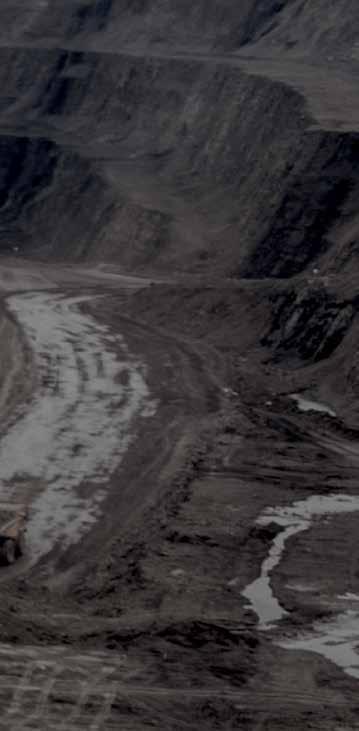










Through o ering the latest digital technology like Virtual Reality, Digital Twin, Advanced Blast Design and Smart MMU’s, we assist customers to continuously improve their blasting processes and outcomes.

AECI Mining globally assists the mining industry to achieve optimal blasting processes and outcomes. Our sustainable approach enables e ciencies and best practice through the application of experience and advanced blasting technology.
aecimining.com GLOBALLY PROVIDING
SMART MMU SUPPLY CHAIN DIGITAL CLASSROOM SECURITY & SAFETY PLANT AUTOMATION VIRTUAL REALITY BLAST HUB
AECI MINING E mining.marketing@aeciworld.com T +27 11 606 00001 | Platinum Drive, Longmeadow Business Estate North, Modderfontein, 1645, South Africa
TECHNOLOGIES

By integrating digital solutions into our product and service applications, we’ve achieved tighter value chains, precision blasting and consistent results. – Riemensperger
MAXIMISING INTERNATIONAL EXPANSION
“AECI is dominant in Africa, however global expansion will require a di erent approach. Decarbonisation within mining companies is a critical priority, along with the shi from CO2 to Nature Positive, and a fundamental move towards energy transition metals and sustainable water management.”
He adds that zero harm and sustainability remain a key part of AECI’s growth strategy, with a vision of delivering sustainable solutions for a better world through innovation and excellence.
“Key to this is our commitment at group level to net zero emissions by 2050,” he says. “AECI has committed to reducing its Scope 1 and Scope 2 emissions (direct emissions from owned or controlled sources and indirect emissions from electricity, steam, heating and cooling) in pursuit of this target, and we have implemented a system to track our Scope 3 emissions for raw materials produced through leveraging digitisation.”
AMBITIOUS TARGETS
Ultimately, he says, AECI’s aim is to become a global top-three integrated mining explosives and chemicals solutions provider by 2030, a leader in profitability, safety and operational excellence.
“On the mining explosives side, we will pursue this goal by protecting our core markets, building value-added capabilities, leveraging existing client relationships and leaning on our underground mining expertise and di erentiated capabilities,” says Riemensperger.
AECI, he says, has a longstanding tradition of innovation, evident in its range of explosive products and associated services tailored for its customer. The company has continuously sought to enhance its operations through digital solutions, spanning from manufacturing to storage and use of these o erings.
“By integrating digital solutions into our product and service applications, we’ve achieved tighter value chains, precision
AECI: OVER 100 YEARS OF MAKING HISTORY
■ 1896 – Opening of the Modderfontein Dynamite Factory.
■ 1924 – Formation of African Explosives and Industries Limited (AE&I).
■ 1966 – The company lists on the Johannesburg Stock Exchange (JSE).
■ 1976 – Name changed to African Explosives and Chemical Industries Limited (AECI).
■ 1978 – AECI files first emulsion patent.
■ 2001 – First single blast using 1 500 electronic detonators at Damang Gold Mine in Ghana.
■ 2007 – AECI’s first capital investment outside Africa in Indonesia.
■ 2019 – Powergel X2, an industry first, is developed for customers who experience reactive ground and hot hole conditions.
■ 2021 – AECI successfully commissions the world’s deepest emulsion vertical drop system with a depth of 1 000m.
■ 2022 – The CyberDet smart wireless detonator is available for remote and autonomous charging and blasting.
blasting and consistent results. Our range of solutions includes smart delivery systems, digital blast so ware, and the groundwork for transitioning towards an AI-driven future.
“With a legacy built on innovation and a vision focused on shaping the next century of progress, AECI is well positioned to inspire and drive digital innovations that will redefine the landscape of its industry for generations to come,” says Riemensperger.
www.samining.co.za 10 SA MINING MARCH / APRIL 2024 EXPLOSIVES COVER STORY
“ “



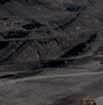

























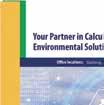
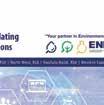
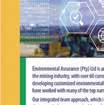
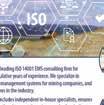

























www.samining.co.za SA MINING MARCH / APRIL 2024 11 COMPETITION Two lucky readers will win a La Motte gift set AND WIN FIND THE ADVERT YOU COULD WIN … A La Motte gi set that includes a 2021 La Motte Sauvignon and a 2018 La Motte Cabernet Sauvignon. To stand a chance to win and be included in our Business Media Mags newsletter database, simply SMS the letters and page numbers (for example, A15) of the adverts as they appear in the magazine, followed by your full name, email address and physical address to 41892. SMSs costs R1.50 each. Terms and conditions apply. SMS errors are billed; free SMSs do not apply. For full terms and conditions visit https://businessmediamags.co.za/ Competition ends 29 May 2024. BETTER BLASTING aecimining.com GLOBALLY PROVIDING SUSTAINABLE EXPLOSIVES Our suite of Surface and Underground Explosives is meticulously researched to ensure sustainable blasting outcomes in the most challenging conditions. INITIATING SYSTEMS AND ELECTRONICS Our experience has enabled us to perfect robust electronic initiation systems and electronics technology which provides significant advances in safety and operational e ciencies. SMART DELIVERY SYSTEMS Providing smart delivery systems that enables the customer to utilise new mining methods and blasting techniques to ensure e ciency, increase productivity and reduce blasting costs. Through o ering the latest digital technology like Virtual Reality, Digital Twin, Advanced Blast Design and Smart MMU’s, we assist customers to continuously improve their blasting processes and outcomes. TECHNOLOGIES mining.marketing@aeciworld.com +27 11 606 00001 Platinum Drive, Longmeadow Business Estate North, Modderfontein, 1645, South Africa AECI Mining globally assists the mining industry to achieve optimal blasting processes and outcomes. Our sustainable approach enables e ciencies and best practice through the application of experience and advanced blasting technology. CONTACT US TODAY • www.mineral-loy.co.za • 011 802 4050 • info@mineral-loy.co.za PRODUCT AND SERVICE BEYOND EXPECTATION KINETIC BREAKER Your guaranteed solution for eliminating secondary blasting, oxygen lancing, rock breaking and Iron skulls. • High impact energy • Zero injuries • Eliminates noise pollution, dust, toxic emissions, and chemical contamination. • Minimal ground vibrations • Improved productivity • Zero fly rock www.manitou.com Represented throughout the African continent through our network of dealers. Tel: +27 11 601 3000 Email: info.msa@manitou-group.com MHT-X RANGE The Manitou Heavy Telescopic MHT machines are designed to safely handle bulky, heavy loads on all types of terrain. Combining performance and versatility, the MHT will increase productivity on any mining site. Equipped with an attachment recognition system, which provides an adapted load chart on the in-cab display to ensure that the machine is always operated within safe working envelope, the MHT range offers greater safety on the site! HEAVY DUTY TASKS NEED HEAVY DUTY SOLUTIONS End-to-End Solutions: Sales Services Training Parts 25 T CAPACITY UP TO WE CAN HANDLE THE PRESSURE. GUARANTEED. Introducing the new Land Cruiser 70 Series. Equipped with a new rugged grille and bumper with black finish, refined styling, improved safety* and convenience features* and LED fog lamps, the new Land Cruiser 70 Series has been upgraded to suit the present-day, while retaining the durability and reliability that have made the master of Africa for so many years. When it comes to performance, the new Land Cruiser 70 Series delivers incredible power throughout the range, which now has more fuel-efficient, 2.8 turbo-diesel model added to the line-up. No matter the task or the terrain, the new Land Cruiser 70 Series is Still the Master. STILL THE MASTER THE NEW LAND CRUISER 70 SERIES A D C F B E HOW TO ENTER All you have to do is let us know on which page each advert appears.

ENERGY INFRASTRUCTURE: A COMPETITIVE ADVANTAGE TO RESOURCES COMPANIES
Mining companies need to proactively invest in renewable energy infrastructure, to help support their operational needs, while aligning with sustainability goals.
African-based mining and resource companies that have invested in renewable energy infrastructure over the past few years are now reaping the benefits. Not only do they have access to cheaper power, but they’re also achieving sustainability goals identified by stakeholders, including lenders looking to fund expansion.
Sustainable financing is becoming an increasingly topical issue for both bank and nonbank financing institutions, and mining companies will feel the pinch at the balance sheet level if they are not embracing a shi towards clean energy projects. This could be encapsulated in possibly lower funding costs for clean energy projects.
Due to “traceability” considerations by certain markets – for example pending European Union legislation, or possible London Metal Exchange requirements – the price paid for certain commodities like green copper and green steel could be higher. At the same time, the demand for commodities that do not meet this threshold could wane as the price becomes more expensive, due to additional carbon and other taxes or restrictions imposed by such legislation or guidelines.
Some of South Africa’s largest mining and resource businesses have recognised this, and have proactively invested in energy infrastructure that not only supports their operational needs through energy access, but also aligns with sustainability goals and growth strategies.
BATTERY STORAGE
 By Theuns Ehlers
By Theuns Ehlers
Head: Resources & Project Finance and
Bhavtik Vallabhjee
Head: Power and Renewables, at Absa CIB


A key development in 2023 was the recognition that generation was only part of the equation when it comes to energy infrastructure, and that storage, transmission, and distribution will be the focus areas in the foreseeable future.
The November announcement of the first four bidders for phase 1 of the Battery Energy Storage Independent Power Producers Procurement Programme is an important milestone, one that will provide a catalyst for further energy storage projects in Africa. Traditionally, electricity is a commodity that cannot be stored a ordably, with very limited storage capacity existing mainly in the form of pumped storage.
BESS (Battery Energy Storage Systems) would allow for electricity storage and dispatchability on an “as-needed” basis, and will help unlock grid capacity in congested areas where surplus generation – for example from the Northern Cape – can be stored during the day, and then released during peak demand periods.
The investment into transmission grid capacity would thus help unlock the bottlenecks that currently exist, and allow for more generation capacity, including decentralised generation capacity, to be built.
While South African businesses have made significant progress in the rollout of renewable energy projects to support the mining sector
EGYPT
and drive sustainability, most of the rest of Africa has not kept pace with SA.
Notwithstanding this, there has been some very notable activity on the continent. Here are some examples:
ZAMBIA
Zambia has been an interesting country to watch as it is undergoing a significant shi in its energy infrastructure. The country has a relatively low generation base – roughly 2 800MW – of which 85% is via hydroelectric power. Climate change has severely impacted rainfall patterns in the country, and the state-owned power utility ZESCO has been forced to implement load shedding as a result of lower-than-expected hydro-generation capacity. This has curtailed investment in key sectors, including agriculture and mining.
Considering that Zambia is one of the top 10 copper producers in the world, home to one of the largest nickel mines in Africa, a leader in gemstones, and is considered a key supplier in the electric vehicle battery supply chain for battery minerals, these crippling power issues will impact the ability of the country to unlock its economic potential.
Increased investment in its clean energy sector will help diversify its generation base and provide stability to the mining sector, while it is also worth noting that mining companies are turning to captive power initiatives to augment grid power supply.
Egypt is another country that’s worth watching closely – particularly with its ties to the Middle East, and its proximity to Europe.
As a country that’s rich in resources including oil, gas, gold, phosphate, tantalum, and other minerals, developments in its energy sector are of paramount importance to support these energy-intensive industries.
The country enjoys a combination of flat terrain, glorious levels of sunlight, and wind, which makes it a destination of choice for renewable energy projects and capital-intensive green hydrogen projects.
Despite this, less than 10% of its nearly 60GW of installed capacity is delivered via non-fossil fuel sources. The country has set itself a goal of securing $1-billion in new mining project investment by 2030, and through its abundance of clean energy sources – wind, solar and hydro – it has the potential to be a destination of choice for mining houses.
Clearly, investment in power is the precursor to any energyintensive business. Mining and resource companies that have recognised that investments in distributed, a ordable clean energy infrastructure will be a comparative advantage are likely to find themselves better positioned, relative to peers who have underinvested in this area.
www.samining.co.za 12 SA MINING MARCH / APRIL 2024 The views expressed are the author’s own and do not necessarily reflect SA Mining’s editorial policy. © ISTOCK –Bilanol COLUMN ENERGY


Engineering solutions for the Global Mining Industry
Mining Geotechnical Ventilation Mechanical Electrical Metallurgical

SOUTH AFRICA OFFICE: +27 11 476-7091
Etienne de Villiers: +27 83 327 6517 / etiennedv@baraconsulting.co.za
Jim Pooley: +27 82 373 0796 / jim@baraconsulting.co.za
Clive Brown: +27 82 557 5373 / clive@baraconsulting.co.za
www.baraconsulting.co.za
UNITED KINGDOM OFFICE
Andrew Bamber: +44 744 486 4046 / bamber@baraconsulting.co.uk
www.baraconsulting.co.uk
MITIGATING CO² EMISSIONS

WHILE ENABLING THE JET

The Council for Geoscience suggests that Carbon Capture, Utilisation and Storage is a scientifi c intervention that can reduce emissions, while assisting the Just Energy Transition.
The economic impact of coal across local communities should not be underestimated, particularly in light of the fact that close to a quarter of a million workers are employed in the coal industry. Thus, any discontinuation of this fossil fuel cannot be spoken of without considering its socio-economic impact.
Nonetheless, South Africa – like the rest of the world – is eager to find lasting solutions that protect its environment and reduce greenhouse carbon emissions.
The Council for Geoscience (CGS), with over 111 years of geoscience knowledge and experience, remains fully committed to finding new technologies that will enhance environmentally friendly energy sources. Sustainable solutions are needed though. One of these, currently considered globally as a key solution, is Carbon Capture, Utilisation and Storage (CCUS).
Globally, hydrocarbons like coal and oil have been largely depended on for more than a century, and South Africa is no exception. It’s nearly 30 years since the United Nations Framework Convention on Climate Change (UNFCCC) was initiated, and most member states are signatories.
The UNFCCC calls on members to act in the interest of their citizenry and humanity at large.
Advances in CCUS technology globally, including in countries like the United States (US), Norway and Canada, have proven that the technology is a feasible alternative to reducing CO2 emissions through utilisation and underground storage in suitable geological formations. Once underground, the CO2 interacts with the geological environment and mineralises, which reduces the risks associated with leakage.
CCUS’s intention is to capture CO2 from the source, such as the fired power plants, and transport it to carefully selected geological sites for permanent storage, which is supported by an extensive monitoring of the process, from the start to post injection and storage.
The CGS has recently commenced with geological characterisation of an identified potential site in Leandra, Govan Mbeki Local Municipality, in Mpumalanga. Here, consultations with myriad stakeholders from three government spheres, along with local traditional leaders, communities, environmental non-governmental organisations, and farmers and local
businesses, have borne fruit. This is due to the long-term goal, which is to see the community benefit from this development.
Govan Mbeki Local Municipality, meanwhile, has contributed a piece of land for this research to be implemented. The identified site has taken into consideration all factors such as location, geology, socioeconomic and technological aspects to make a pilot feasible, thus a site proximal to CO2 emitters.
TWO-PRONGED APPROACH
The two-pronged approach then sees the CGS being on the drive to make South Africans aware of the CCUS technology. There is no doubt this technology is encouraging, though we need to be mindful that it may take time before we see the commercial benefits and return on investment, notes the CGS.
The models that have worked in countries such as the US cannot be readily assumed to also work in South Africa. Hence, the CGS and other scientists are investing time and e ort in extensive techno feasibility studies and technological disruptions, particularly adaptable to sites in South Africa, both on- and o -shore. This
www.samining.co.za 14 SA MINING MARCH / APRIL 2024 GREEN MINING ADVERTORIAL

The identified site has taken into consideration all factors such as location, geology, socio-economic and technological aspects to make a pilot feasible, thus a site proximal to CO2 emitters.
is in line with the fact that the country has already pledged to cut CO2 emissions by 50% by 2030, which is eight years from now.
The truth about coal is that it is a ordable. There are enough coal companies in South Africa, employing tens of thousands of citizens, although today, financing development of coal projects has become increasingly challenging, with financing institutions investigating how best to contribute towards the reduction of greenhouse emissions. Technologies need to be applied on how best to use coal, as we transition towards a low-carbon economy. The big question is whether this just transition can be done sustainably, justly and justifiably.
Once we have figured out the nature of this reduction intervention, such a breakthrough will not only benefit Eskom, communities, and business, but will also go a long way in the commitment we have made when it comes to CO2 emissions. As Eskom unbundles into three divisions, it is hoped these would be synced to address this long-standing problem, as Eskom continues to operationally rely on coal.
The technology associated with CCUS is centrally developed as an economic
contributor that aims to do better and contribute generously towards the country’s gross domestic product. In this regard, the South African government assigned the CGS as an implementing agent for the CCUS research in partnership with the World Bank.
The CGS has further developed a network of private business partnerships that span the Development Bank of Southern Africa, Sasol and Exxaro, while others are still in the pipeline for finalisation. With such partners, this intervention is guaranteed to benefit from collective wisdom, resource crowding and accelerated implementation of ideas and technological applications.
The CCUS project has underlined how pivotal South Africa’s commitment to reducing greenhouse gas emissions is. The project directly responds to government’s call that innovative solutions are sought for a transition to a low-carbon economy.
It’s a question that cannot be brushed aside, and one that a project such as CCUS aims to answer as it undertakes to be part of a solution that will ultimately benefit the entire country. Moreover, it has been proven from other parts of the world that CCUS could be a viable option.
The CGS’s aim, though, is to not only
WHAT IS THE JET?
The Just Energy Transition (JET) is a $497-million project approved by the World Bank Group in November 2022 at the request of the SA government. It will support its public energy utility, Eskom, to decommission the 56-year-old Komati coal-fired power plant, repurpose the project area with renewable energy and batteries, and create opportunities for workers and communities. Beyond improving supply and grid stability, the technical solutions tested at Komati can demonstrate how South Africa can integrate renewables and batteries in the national energy grid, leading to employment creation opportunities through the installation of those new technologies.


copy from the work that’s already begun in other parts of the world, but endeavour to deliver a project that takes into account our diverse geology, unique environment, and overall technical excellence of our South African institutions.
www.samining.co.za SA MINING MARCH / APRIL 2024 15
–
“ “ © ISTOCK –rui_noronha
CGS
KINETIC BREAKER
OFFERS MINES A SMASHING TIME
Designed to crush a wide range of different materials, Mineral-Loy’s Kinetic Breaker offers an environmentally friendly and safe breaking solution.
Mining companies often struggle with the secondary blasting of rocks, boulders, crop rocks, slag, iron skulls and other large materials. The answer to this challenge can be found in the new Kinetic Breaker solution.
The Kinetic Breaker is a 15-tonne machine equipped with a five-tonne guided hammer, something that generates a remarkable 290 000 joules of energy. This makes it capable of crushing a wide range of different materials.
According to Mineral-Loy, the Kinetic Breaker offers an environmentally friendly and safe breaking solution, when compared to traditional methods like blasting or oxygen lancing. Essentially, this specialised solution works by repeatedly dropping a large, weighted hammer through a guided tube, onto the material in order to fracture it through a high level of precision.
The breaker is designed to be used in the mining, construction, quarry and steel-making industries. The range of materials that can be processed is significant as the Kinetic Breaker can smash the toughest of materials. This is why the solution is ideal for eliminating scenarios such as secondary blasting, crop-rock breaking, and slag and iron skulls breaking. It is equally effective at breaking down sizable boulders and other materials into more manageable fragments.
The Kinetic Breaker is affixed to an excavator, which thus provides it with mobility, allowing it to operate in remote locations and to more easily be moved to operate where required.
Among the key benefits offered by the Mineral-Loy solution is that mines can rest assured that it will help in reducing operating

expenses and enhancing productivity, while complying with safety and environmental requirements. By offering an all-in-one solution, the Kinetic Breaker caters to all a mine’s breaking requirements.
Furthermore, Mineral-Loy boasts an in-house team of mechanical engineers, chemical engineers and metallurgists, who are adept at furnishing technical assistance and specialised project management expertise.
“With more than seven years of expertise operating this unique equipment at several mining and industrial sites around South Africa, we have consistently upheld a 70% uptime productivity rate,” notes company managing director Philip Steenkamp.
“This has been achieved through zero safety incidents, implementing essential design modifications through constant research and development, provision of
adequate training and upskilling for employees, the establishment of rigorous maintenance programmes, and the leveraging of a welldeveloped, reliable local supplier network for all spares.”
Mineral-Loy was founded in 1975 to meet the needs of the South African steel and foundry industry, through the supply of various raw materials. Over the years, the company has expanded its operations to encompass diverse markets while enhancing its material processing capabilities.
These include turnkey projects, crushing, screening, briquetting and cutting. Mineral-Loy has been the local agent and/or distributor of certain products for entities such as Richards Bay Minerals and Samancor Chrome, among others, for over 20 years – which speaks volumes about the organisation’s established track record.
www.samining.co.za 16 SA MINING MARCH / APRIL 2024 CRUSHING, SCREENING & MILLING CORPORATE PROFILE


CONTACT US TODAY • www.mineral-loy.co.za • 011 802 4050 • info@mineral-loy.co.za PRODUCT AND SERVICE BEYOND EXPECTATION KINETIC BREAKER Your guaranteed solution for eliminating secondary blasting, oxygen lancing, rock breaking and Iron skulls. • High impact energy • Zero injuries • Eliminates noise pollution, dust, toxic emissions, and chemical contamination • Minimal ground vibrations • Improved productivity • Zero fly rock

HOW ENERGY MANAGEMENT STANDARDS CAN IMPACT LOAD SHEDDING
Energy management standards provide guidelines, requirements and calculations for understanding the energy baseline.
By Rodney Weidemann

There is little doubt that the impact of load shedding on South Africa’s mining sector has been considerable. In fact, according to Statistics South Africa, mining output slowed almost 2% in September 2023, compared to the same period in 2022, largely due to the country’s power crisis. Moreover, this was the third month in a row that output dropped o .
It is clear, notes Muhammad Ali, MD of International Organization for Standardization (ISO) specialist World Wide Industrial & Systems Engineers (WWISE), that mining operations cannot rely on Eskom’s power supply and scheduled downtime.
“Power outages impact production targets, market share price and shareholder confidence. This in turn has a huge impact on the economy. Mining companies have therefore invested heavily in diesel generators or alternative energy, such as solar plants – but all these expenses make the cost of mining higher in SA, and investors are losing confidence and looking to put their money elsewhere,” he says.
The situation is such that top management have had to come up with
innovative and impactful mitigation strategies. One of the keys ways they are doing this is by turning to standardisation.
The ISO comprises over 160 national standards bodies, and develops and publishes a wide range of proprietary, industrial and commercial standards. In 2022 alone, it published almost 25 000 international standards and standards-type documents, and SA is a major contributor to standardisation processes in Africa.
“Energy management allows organisations like mining houses to understand their significant energy uses –assets that consume the most amount of energy. The standards, meanwhile, provide guidelines, requirements and calculations to help you understand the current energy baseline,” he says.
“Once these are established, alternative measures can be calculated using a risk-based approach, based on capital expenditure for alternative energy solutions, as a phased approach.”
Load shedding as a whole could actually have been avoided, continues Ali, if standards were followed by Eskom from the beginning, with accountability
INTERNATIONAL BEST PRACTICE STANDARDS SA MINES SHOULD IMPLEMENT:
■ ISO 14001:2015 Environmental Management
■ ISO 45001:2018 Occupational Health and Safety
■ ISO 9001:2015 Quality Management
■ ISO 50 0001:2018 Energy Management
■ ISO/IEC 27001:2022 Information Security
These standards create a level of governance with systems to be able to create a level of consistency and auditable documents/records to justify compliance and conformance. This not only enhances the performance by creating structure in-house, but creates shareholder confidence.
and consequence management, as promulgated by the standards. Although the standards cannot prevent an incident, a cyber-attack or load shedding for that matter, it does allow mines to both reduce the probability and better manage the impact.
www.samining.co.za 18 SA MINING MARCH / APRIL 2024 ENERGY
© ISTOCK –kamilpetran

“

DIGITALISATION TRANSFORMS THE GRID
As the world decarbonises its energy system, electricity will remain the backbone. There is an accelerated shi from fossil-based to renewable power generation, with growing electrification of the transportation, industrial and building sectors.
To manage this, says Malvin Naicker, MD for Hitachi Energy, Sub-Saharan Africa, digital and energy platforms are needed for the enormous power system energy transition challenges related to increased complexity and additional capacity requirements.
“These platforms will enable greater grid resilience, and help manage the shi to a more complex power generation landscape, by matching fluctuations in power supply and demand dynamically,” he says.
Sophisticated so ware solutions are available to manage such trading, allowing real-time exchange of power between users, and settlement of the resultant commercial transactions.
“As the power generation landscape evolves in South Africa, the demand for grid connection solutions is increasing rapidly. There is simply not enough time to meet the demand for new o take and grid integration solutions, unless new solutions such as prefabricated substations are considered as a way to speed up the deployment of such grid connections.”
Decarbonisation, too, is transforming the energy system. It is driving an accelerated shi from fossilbased to renewable power generation, along with electrification of the transportation, industry and buildings sectors, he says. This is creating the need to optimise energy both locally and system-wide, leading to a complex “system of systems” that must be integrated and managed.
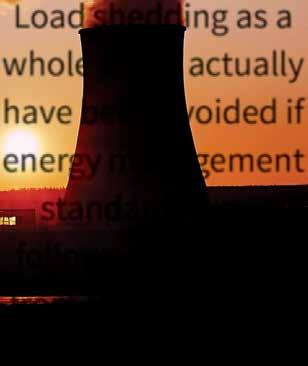
“ Load shedding as a whole could actually have been avoided if energy management standards were followed by Eskom from the beginning.
– Ali
REDUCING THE RISK OF INJURIES
Ali says ISO 45001 is a standard that focuses on the following: awareness, consultation, communication, participation and embedding a culture of safety, before every activity that can result in injury, illhealth, or fatality. Following the processes to avoid these risks is what the standards require. This reduces the probability of impact, as each control is focused within a hierarchy that includes elimination, substitution, engineering, administrative controls and personal protective equipment.
“ISO implementation, along with an accredited certification, helps to validate the numbers on the environmental, social and governance (ESG) reports. This, in turn, increases shareholder confidence and share prices, and reduces insurance premiums.”
The standards provide a set of requirements for achieving the goals,
“A significant aspect of resilience is in cyber-security. The world needs a cyber-secure ecosystem for a resilient electric future. Energy is among the top three target sectors for cyber-attacks globally, and as energy grids become more resilient through the application of digitalisation, attention must be paid to the design and implementation of cybersecurity.”
Through changes in regulation and technology, large power users are now able to generate and use their own electrical energy. Naicker notes that as this self-generation becomes more prevalent, users will start to trade power with each other, with the grid being the trading platform for such exchanges.
“Digitalisation is the only way to manage this complexity, by simplifying the contextualisation of massive amounts of data. However, this must be balanced with managing and optimising today’s operations.
“In the end, if we want to solve real-world challenges and add real value, what is required is the right combination of connected products, so ware-based solutions, and digitally enabled services,” says Naicker.

objectives and targets set out in the ESG framework, with an e ective management system comprising policies, processes, procedures, work instructions, and systems/ applications aligned with the standard requirements. These provide a structured, methodical way for any organisation to achieve ESG commitments, he says.
Ali points out that standards like ISO 45001:2018, along with regular audits of companies in terms of the Mine Health and Safety Act, are vital.
“Organisations tend to be fearful of
audits when these systems are aligned to international standards and local legislation. In South Africa audit findings are generally perceived as negative, given they a ect key performance indicators.
“However, audit findings should instead be encouraged. Once an expert is appointed to assist the organisation to improve, they will make top management accountable for poor maintenance plans and budget reductions that may put lives at risk. This will ultimately leave the company better o , all round,” says Ali.
www.samining.co.za SA MINING MARCH / APRIL 2024 19
© ISTOCK –cozyta

NATURE IS KEY TO AFRICA’S FINANCIAL FUTURE
Africa’s natural resources will remain its greatest economic assets for some time. Those assets need to be protected, and regulation is an important part of that.
By Sandra Villars, Partner, Financial Services at Oliver Wyman
The COP28 conference has resulted in a variety of new climaterelated financial, environmental and infrastructure pledges from leaders across the world. Discussions around nature-based solutions for Africa featured prominently at the event. But how should regulators turn those proposed solutions into concrete regulations?
Africa has a long and complex history with nature and finance. For much of that history, the continent’s abundant, extractable natural resources have been touted as an engine for wealth generation and development. While some countries, most notably Botswana, have used their natural resources successfully, others have suffered from the “resource curse”, whereby they underperform economically, despite abundant natural resources.
“
More recently, however, it’s become apparent that the picture is far more complicated than that. On the plus side, it’s clear that Africa’s renewable natural resources have immense potential for wealth creation. According to a 2022 report by the International Energy Agency, for instance, the continent has 60% of the world’s best solar energy resources.
That’s without mentioning the immense scientific and tourism value to be found in Africa’s flora and fauna. But the natural world also represents economic risks. For example, a 2023 Emergency Event Database (EM-DAT) report found that droughts affected 88.9 million people across the continent in 2022, and floods in Nigeria cost US$4.2-billion.
When it comes to safeguarding Africa’s financial future, it’s therefore critical that regulators take an approach that recognises the massive potential of Africa’s natural
When it comes to safeguarding Africa’s financial future, it’s therefore critical that regulators take an approach that recognises the massive potential of Africa’s natural resources, but also takes all nature-related risks into account.
“
resources, but also takes nature-related risks – both man-made and naturally occurring –into account.
UNDERSTANDING THE GRAVITY OF NATURE-RELATED RISKS
Before examining steps regulators can take, it’s worth digging a little deeper into why nature is so key to Africa’s financial future.
There are prominent examples, such as biodiversity. For example, South Africa alone is home to 10% of all plant species found on Earth (per Fauna and Flora International). Meanwhile, the continent as a whole (per the Intergovernmental Science-Policy Platform on Biodiversity and Ecosystem Services) is home to a quarter of the world’s mammal species and a fifth of its bird species.
Anything that threatens that biodiversity has massive potential knock-on effects.
According to the World Wildlife Fund, reduced biodiversity means more vulnerable food supplies, increased vulnerability to pests and diseases, and less regular supplies of safe drinking water.
But it’s also worth bearing in mind that, according to the United Nations Environment Programme, some 70% of people in Sub-Saharan Africa depend on the region’s forests and woodlands for their livelihoods. Any disruption to those ecosystems could therefore have a significant negative economic impact.
www.samining.co.za 20 SA MINING MARCH / APRIL 2024
SAFETY, HEALTH & ENVIRONMENT

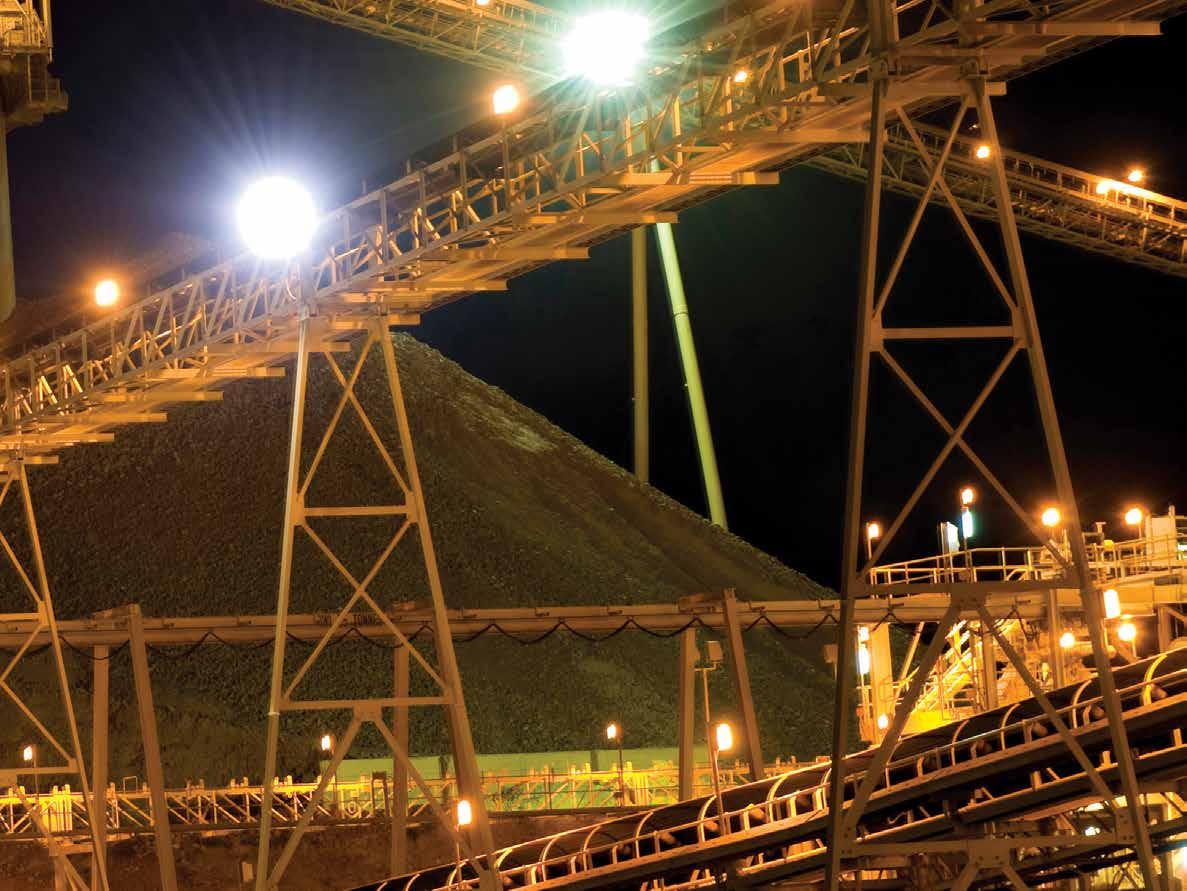

There are dozens of other examples that could be used, all of which underline how important it is for regulators to protect the continent’s natural assets, while safeguarding against nature-related risks. One of the best ways to achieve this is by fostering transparency from both themselves and the financial institutions they oversee.
COLLABORATION, ASSESSMENT, AND GLOBAL ENGAGEMENT
One important way regulators can do so is by engaging proactively with state ministries (such as finance and environmental affairs) as well as policymakers within government. This comes with a couple of advantages.
First off, it means that regulators are much more likely to get government backing for any proposed regulations. It also means that any interventions put in place by regulators are in line with the political context of the country, helping to ensure that
everyone is working towards the same goal.
Continuous assessment is also important. That’s true both for the regulators themselves and for financial institutions. Internally, regulators need to ensure that they understand whether they have the capacity needed to respond to the call for nature-related disclosure transparency, by integrating nature risks into financial sector regulation.
This is a complex undertaking and regulators need to ensure they have the resources needed before starting. But regulators also need to assess whether the financial institutions they’re charged with overseeing have the capacity to take action too. Such an exercise is especially useful in identifying capacity gaps, and how to address them in the short-, medium-, and long-term horizons.
Finally, regulators should ensure they engage regularly with voluntary networks
Continuous assessment is also important. That’s true both for the regulators themselves and for financial institutions.
such as the Sustainable Insurance Forum, the Network for Greening the Financial System, African Natural Capital Alliance, and the Task Force on Nature-related Financial Disclosures.
These networks have set up frameworks that can easily be adapted by regulators. It also means they have a voice in how emerging regulatory frameworks are conceptualised, meaning that they’re suited to African contexts from the start, rather than having to be adapted later on.
Ultimately, Africa’s natural resources (both extractable and renewable) are likely to remain its greatest economic assets for some time. Those assets need to be protected, and regulation is an important part of that. But regulators also need to understand nature-related risks, and how an approach that treats those risks in a way that’s open and transparent can help mitigate them, and secure the continent’s economic future.
www.samining.co.za SA MINING MARCH / APRIL 2024 21
“
“
© ISTOCK –Alfio Manciagli © ISTOCK –Red Stock

LEVERAGING ISO 45001 FOR CONTINUOUS IMPROVEMENT




Effectively leveraging this standard for occupational health and safety management systems should lead to operational excellence and employee wellbeing.
Mining, with its complex operations and inherent risks, demands a steadfast commitment to safety, according to environmental consultancy ENVASS. In the pursuit of a secure working environment, the role of a robust safety culture cannot be overstated, it says, as this is the heart of any mining operation’s success.
This goes beyond mere compliance with regulations; it involves fostering a mindset where safety is ingrained in every aspect of the organisation. A positive safety culture is synonymous with operational excellence and employee wellbeing.
ISO 45001:2018 is the international standard for occupational health and safety management systems, and provides a structured framework for organisations to address occupational health and safety risks. Adopting ISO 45001 is not merely about compliance, but rather it’s a strategic move to embed safety into the organisational DNA.
The ISO 45001 standard serves as the cornerstone for fostering a robust safety culture in mining operations, by providing a structured framework and guidance. This international standard creates an environment conducive to safety consciousness through:
Leadership commitment: Defining roles, responsibilities, and accountability, compelling leaders to actively champion safety initiatives.
Employee involvement: Placing a strong emphasis on engaging workers in safetyrelated decisions, and making safety a collective responsibility.
Adopting ISO 45001 is not merely about compliance, but rather it’s a strategic move to embed safety into the organisational DNA. “ “
Communication strategies: Aligning with e ective communication channels to ensure seamless flow of safety-related information.
Learning and development: Encouraging continuous learning through investment in training programmes and competency assessments.
Measurement and evaluation:
Promoting a data-driven approach to safety, using metrics and indicators specified in the standard for accurate performance assessment.
Continuous improvement: Instilling a culture of continuous improvement by emphasising a cycle of planning, doing, checking, and acting, thereby encouraging organisations to view safety as an evolving process.
It’s worth noting that ISO 45001 serves as a catalyst for building and sustaining a strong safety culture in mining organisations. By aligning with the principles of ISO 45001, mining companies can create safer workplaces, enhance employee wellbeing, and contribute to the overall success and sustainability of their operations. It’s not just a standard; it’s a commitment to excellence in safety, ensuring that every worker returns home safely at the end of the day.
Ultimately, ENVASS is equipped with a team of experienced ISO auditors and implementation sta – o ering expertise and support to enhance safety practices and ensure compliance with international standards – who can play a vital role in guiding mining organisations through the implementation and continual improvement of ISO 45001.
www.samining.co.za 22 SA MINING MARCH / APRIL 2024 SAFETY, HEALTH & ENVIRONMENT CORPORATE PROFILE

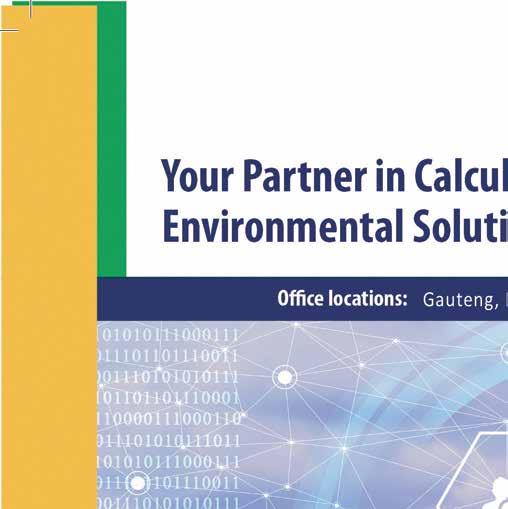
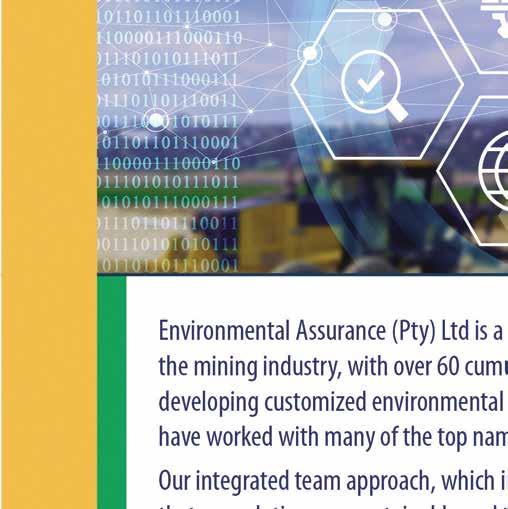
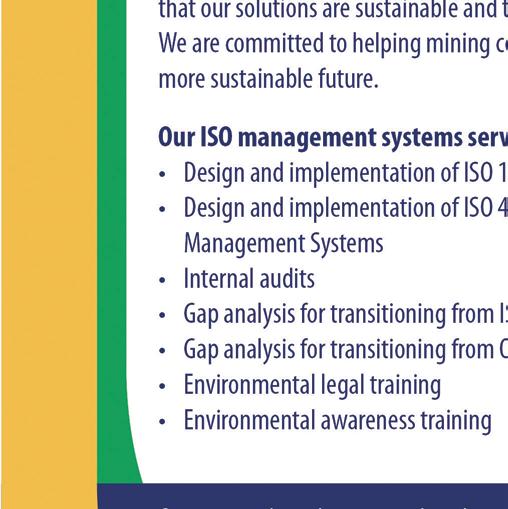


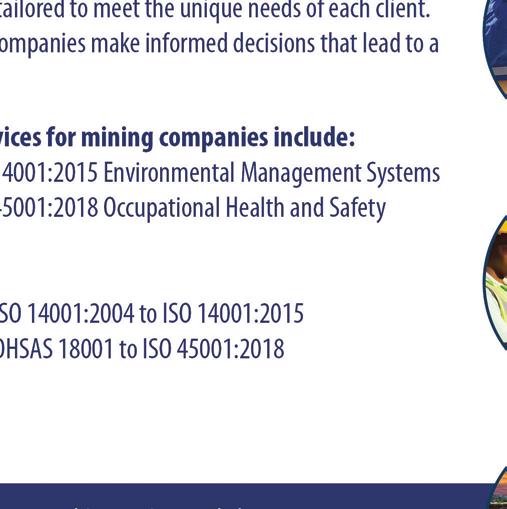
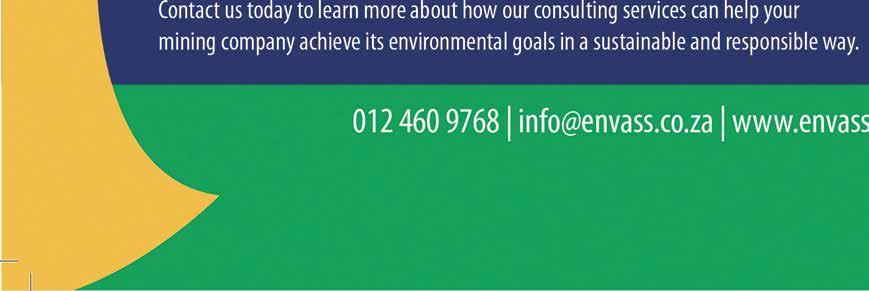

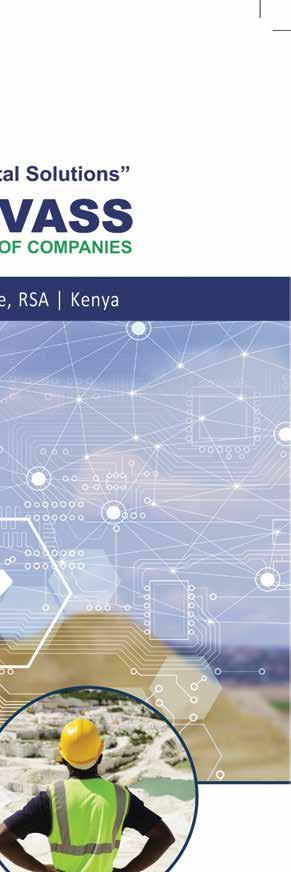




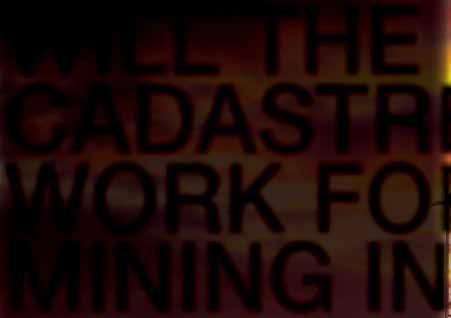
WILL THE NEW CADASTRE SYSTEM WORK FOR THE JUNIOR MINING INDUSTRY?
While in theory the new mining cadastre system should signifi cantly improve licence applications for junior miners, many of the underlying challenges of SAMRAD remain.
Dr Andries van der Linde, Executive Head of Renewable Energy at SSC Energy

The objective of mineral processing is to produce maximum value from a given raw material, and to derive value from unexplored and sterile resources. As with anything in life, there must be a starting point, and in this case, it is the knowledge of where the minerals are. For this, there are numerous tools to assist the prospector, starting with researching geological features.
In this regard resources from the Council for Geoscience, which makes data, information, and knowledge available to the mining and exploration industry, comes to mind. The sources of such data can come from surface exploration, aerial surveys or satellite sensor technology. Other sources include compare-and-contrast methods, based on magnetic and electromagnetic data, regional gravity data, topographic mapping, ground penetrating radar, infrared spectroscopy, and photogrammetry. Of course, such methods only provide indicators, and eventual confirmation is only established by means of test holes.
This creates a major challenge for the junior mining industry, from the perspective of turnover, because a er expending what for them could be significant resources, the prospecting entity must ensure that the area of interest is available and hasn’t already been applied for or had a mining licence granted. Environmental considerations are also important – something that can stop any future mining activity in its tracks.
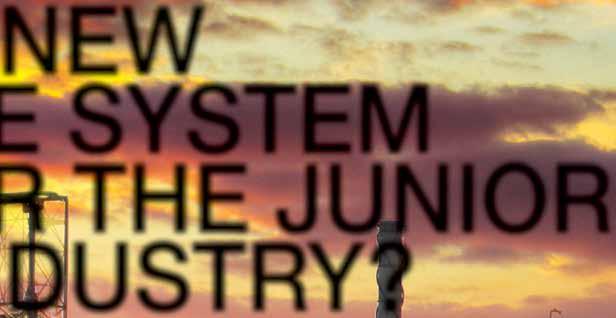
Theoretically, the South African Mineral Resources Administration System (SAMRAD) should facilitate the answers required by junior miners. However, as it stands, the SAMRAD system is totally unreliable, being consistently impacted by what is either permanent paralysis or intermittent issues combined with bad timing. However, it appears for starters to be virtually impossible to establish whether selected areas are available for registering a prospect right.
“ “
As it stands, the SAMRAD system is totally unreliable, being consistently impacted by what is either permanent paralysis or intermittent issues combined with bad timing.
STRONG EXAMPLES FROM AFRICA
For comparative purposes, the author had a look at the Namibia Mines and Energy Cadastre Map Portal, and the surprising and interesting di erence immediately shows itself.
The first aspect one notices is the mining cadastre map, combined with a legend of
the Active-Mining Rights and Applications –Mining Rights and an Administrative section listing Withdrawn Areas, Geology, Mineral Occurrence, Heritage Sites and Satellite Imagery. Areas are colour-coded, with tools to interrogate the map in more depth and which provide detailed information of an area of interest.
Clicking on an area the following information is provided: type of licence (mining, prospecting or reconnaissance); company name; relevant dates; commodities to be found on the site; and magnitude. For anybody in the junior mining industry, this would be an incredible tool to easily find out which areas to avoid.
Talking about avoiding, one of the banes of exploration and establishment of a mine is the environmental impact assessment, with heritage sites o en becoming a contentious issue. The heritage function identifies what is possibly all the heritage sites in Namibia. The Botswana portal is even more impressive and detailed, and any description that would give it the justice it deserves, would take up most of this article.
Should South Africa adopt a similar approach to Namibia or Botswana, it would already be a major step forward. However, although the information provided by these interactive maps would be a significant step forward, this is only the start for the junior miner. The next step, a er having done their homework to ensure the prospecting right area is available, is to make sure there are
www.samining.co.za 24 SA MINING MARCH / APRIL 2024
–TomasSereda
© ISTOCK
MINERALS PROCESSING


no obvious environmental issues, and that the geological indicators are positive, before applying for a prospecting right.
A NEW SOLUTION
However, registration is a tedious process requiring a certain level of competence, which is not helped by the inadequate SAMRAD system. Based on numerous complaints, some of the faults here lie with the people behind the system, which results in delays, confusion, and sometimes, outright manipulation.
As in all problem areas, these issues will not suddenly disappear unless there is a total overhaul. This must include another look at the people behind the scenes, because although it is an online portal, delayed applications already peaked at 5 000 in November 2022, and must be labelled an obstacle to mining investment in South Africa.
The good news is that South Africa will
It would be overly optimistic to believe that the new mining cadastre system would suddenly solve all the problems and eliminate all the obstacles facing the junior miner sector. “ “

replace SAMRAD with a new mining licensing system and online database, known as a cadastre system. This, according to Minerals Council South Africa CEO Mzila Mthenjane, will speed up applications for prospecting and mining rights. However, it has already taken four years to announce the service provider, while the implementation date has also come and gone. Despite these apparent delays, Minister Gwede Mantashe has said the country won’t rush the implementation of the new cadastre system.
The term “time is money” comes to mind. Considering the time and money it takes to get any mining operation going, and adding to this the financial issues faced by most junior miners, any delay can become a major problem – while extended delays can be catastrophic.
At the same time, it would be overly optimistic to believe the new mining cadastre system would suddenly solve all the problems and eliminate all the obstacles

facing the junior miner sector. Therefore, to blame it all on the SAMRAD system is simplistic.
To start with, the expertise required to complete the documentation process, which includes a prospecting works programme, as well as the final rehabilitation, decommissioning and closure of the mining plan, would require expert input. The environmental impact assessment can be equally expensive and contentious, while there are further costs in the form of a test hole programme to collect geologic information, which requires further expert input to analyse.
When asked which is the most significant hurdle the junior miner faces, the invariable answer is finances – which really is the main di erence between the junior mining industry and the majors when it comes to success and failure. This is because junior miners typically do not have the cash in hand, and they find it di icult to attract investors.
Therefore, despite the fact that the new cadastre system will not eliminate all the challenges faced by these players, it is vital that this solution be implemented as soon as possible. A er all, having access to the right prospecting, licensing and other critical data in one place is a crucial step forward in helping such businesses reduce both the costs and costly delays that currently make it extremely tough for juniors to properly compete in the South African mining industry.
www.samining.co.za SA MINING MARCH / APRIL 2024 25
© ISTOCK –
Chulov

THE CRUCIAL ROLE OF DISPUTE RESOLUTION IN THE CIVIL ENGINEERING SECTOR

In the fi eld of civil engineering, it’s vital to uphold equity and stability. To accomplish this goal, effi cient confl ict resolution is essential, and this is where the Bargaining Council for the Civil Engineering Industry (BCCEI) plays a crucial part in this industry.
In the civil engineering arena, maintaining fairness and stability is of paramount importance. To achieve this, e ective dispute resolution is indispensable, and this is where
the Bargaining Council for the Civil Engineering Industry (BCCEI) plays a vital role in this sector.
The BCCEI’s Dispute Resolution Centre is central to the handling of disputes specific to the industry, and is accredited by the Commission for Conciliation, Mediation and Arbitration (CCMA).
It must be stressed that dispute resolution is not only a means to solve conflicts, but also a vital aspect of good business management. For one thing, it prevents conflicts from escalating, saving both time and money, while o ering an alternative to costly court proceedings.
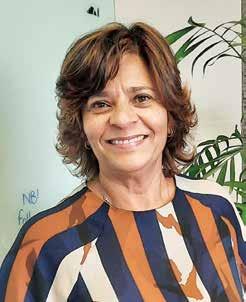
 By Merle Denson Dispute Resolution Centre Manager at the BCCEI
By Merle Denson Dispute Resolution Centre Manager at the BCCEI
As far as the Dispute Resolution Centre goes, its accreditation from the CCMA ensures that disputes are e iciently resolved within legal parameters. Moreover, the Dispute Resolution Centre leverages the skills of a panel of commissioners,
all of whom bring deep industry knowledge and experience to the table, thereby guaranteeing expert handling of complex civil engineering issues. Its function is also to prioritise accessibility, by scheduling cases regionally – this helps to minimise financial burdens and time constraints for parties. Furthermore, and in response to the challenges posed by COVID-19, the Dispute Resolution Centre also o ers online dispute resolution services, enhancing e iciency and reducing costs.
It is important to note that the accessibility of the Dispute Resolution Centre’s services is ensured through a specific funding mechanism, one where both employers and employees contribute to the cost of dispute resolution, via a monthly levy.
In dismissal cases that are referred to the BCCEI, the process adopted by the Dispute Resolution Centre is one that involves referral, notice of hearing, conciliation, arbitration, and potential settlement agreements. Commissioners and arbitrators, appointed by the BCCEI, are crucial in ensuring fair and e icient resolution.
Dispute resolution is vital in preventing conflicts from escalating – saving both time and money, while additionally o ering an alternative to costly court proceedings.
– Merle Denson “ “
Ultimately, e ective dispute resolution is a vital component in the civil engineering industry’s drive to achieve stability and fairness.

www.samining.co.za 26 SA MINING MARCH / APRIL 2024 COLUMN ENGINEERING
views expressed are the author’s own and do not necessarily reflect SA Mining’s editorial policy. © ISTOCK –Phonsawat
The


And the BCCEI and its Dispute Resolution Centre are the ideal tools to provide genuinely accessible, expert and e icient mechanisms for resolving industry-specific disputes – thereby fostering a more e ective and harmonious work environment.
YOUR 24/7 SERVICE PARTNER
Repairs, maintenance and customised manufacture of all electrical and mechanical rotating machines.
ELECTRICAL SERVICES
Medium and low voltage, Ex certified, AC and DC motors, transformers, generators, alternators and ancillary power generation equipment up to 373 MVA.
MECHANICAL SERVICES
Full range of rotating machinery mechanical services. Machine shop capabilities including dynamic balancing up to 32 tons, large machining up to 40 tons, micro welding and hydraulic presses up to 1000 tons.
24 HOUR ON-SITE SERVICES
Breakdown repairs, removal, re-installation, on-site testing, dynamic balancing, alignment, vibration analysis, root cause analysis, condition monitoring, preventative and predictive maintenance, motor management programmes and maintenance contracts.
CUSTOMISED ELECTRICAL AND MECHANICAL DESIGN
Reliability improvements/enhancements, efficiency improvements, performance upgrades and root cause analyses.

+27 (0) 11 607 1700 | support@mandc.co.za
53 Hospital Street, Cleveland 2094, JHB
PRIMARY GOALS AND OBJECTIVES
The BCCEI’s primary goals and objectives extend beyond dispute resolution as a bargaining council. Its responsibilities encompass concluding and enforcing collective agreements; preventing and resolving labour disputes; administering dispute resolution functions; establishing and managing funds for dispute resolution; promoting and initiating training and education schemes; developing proposals for labour policies and legislation; providing industrial support services; and extending services to non-parties in the industry.


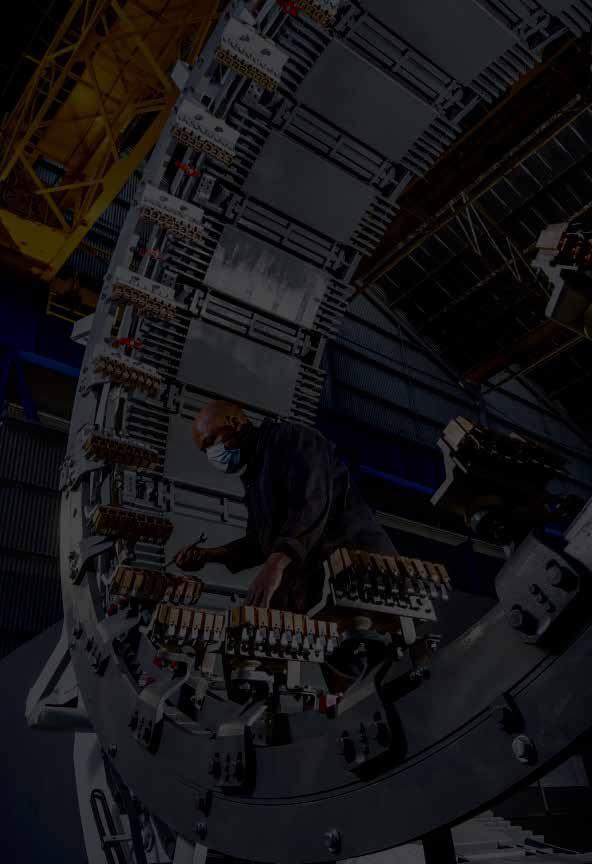
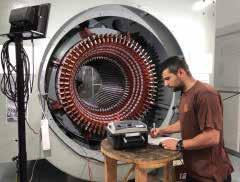

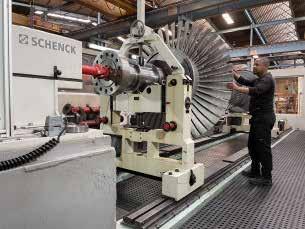
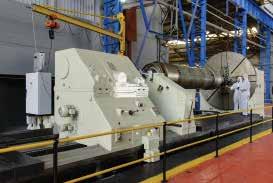
© ISTOCK –goncharovaia
© ISTOCK –sorn340
www.mandc.co.za
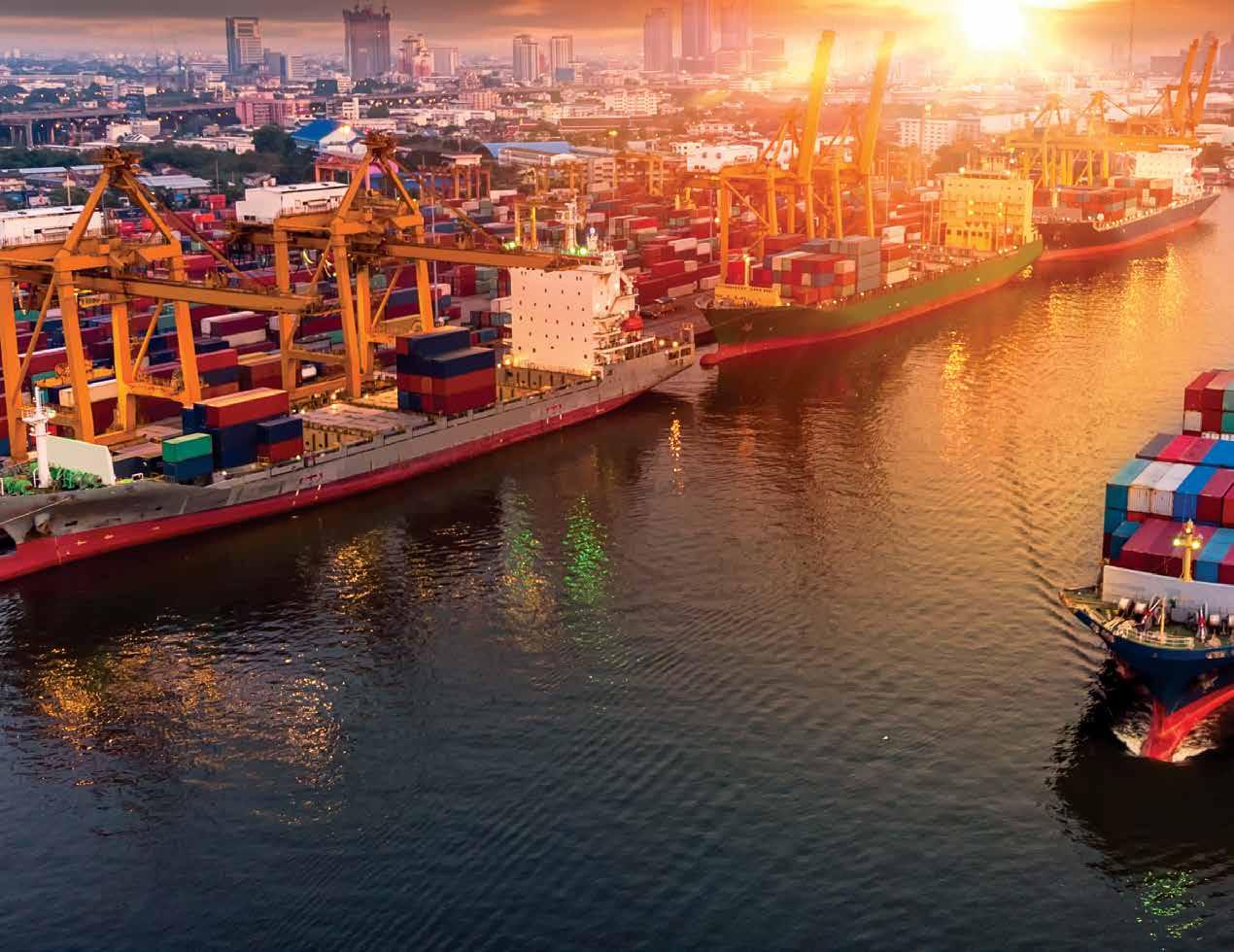
BROAD-BASED WEAKNESS EVIDENT IN THE LOGISTICS SECTOR

The Ctrack Transport and Freight Index recorded a notable decline at the start of 2024 – but thanks to the transport sector, it is not all doom and gloom.

Aer increasing somewhat in December 2023, the Ctrack Transport and Freight Index (Ctrack TFI) declined notably at the start of 2024, to an index level of 119.3, a drop of 2.1% compared to December’s level of 121.9. This abrupt deterioration in January is indeed a stark reminder that the sector still faces many challenges at the beginning of 2024.
Although born out of crisis, some progress had been made towards the end of 2023 to address the sector’s challenges and urgent focus is needed to take these reforms to fruition. According to the latest report from Operation Vulindlela (Q3/Q4 2023), progress has been made in the following areas:
APPROVAL OF THE FREIGHT LOGISTICS ROADMAP
The appointment of a permanent board for Transnet National Ports Authority (TNPA).
The National Logistics Crisis Committee (NLCC) has been formally constituted with participation from relevant government departments, Transnet and business.
The Economic Regulation of Transport (ERT) Bill has been passed by the National Council of Provinces and public consultation has been concluded.
Looking at the key sub-sectors, Ctrack CEO Hein Jordt notes that sea freight remains one of the main focus areas of South Africa’s structural reform e orts.
In July 2023 Transnet concluded the selection of an equity partner for the Durban Container Terminal Pier 2, which handles 72% of the Port of Durban’s throughput and 46% of South Africa’s port tra ic. The partnership will see Transnet Port Terminals enter into a 25-year joint venture with International Container Terminal Services Inc, with Transnet expecting to finalise the agreement by April 2024.
“The joint venture is expected to crowd in much-needed investment and management expertise from the private sector, which will li the economic value-add of the sub-sector and have a broader positive impact on the logistics sector.
“A er tumbling in October and November – reflecting the inability of ports to handle cargo due to a multiplicity of contributing factors – the sea freight sub-component started to recover in December and increased further by 2.8% in January, the only sector to record a positive monthly contribution,” he says.
“As for the road freight sector, the biggest among the sub-sectors experienced multiple
headwinds in the last few months of 2023, and recorded a slow start to the new year. The road freight sub-component declined by 1.2% in January, compared to December, and slipped marginally below year-ago levels.”
In addition, Jordt indicates that heavy vehicle tra ic on the N3 route (large and extra-large trucks) declined by 2.6% in January compared to a year earlier, while heavy vehicle tra ic on the N4 route declined by 4.6%. Furthermore, total country road freight payload also declined by 4.4% y/y, confirming the broad-based slack in road freight in January, probably a reflection of the mediocre performance of the broader economy.
He also points out that a notable increase in the rail freight sub-sector, recorded in October 2023 (37.5% m/m), turned out to be short-lived, with the sub-component sagging back to its mediocre levels since then, declining by 7.6% m/m in January, following on sizeable declines in November (-27.5% m/m) and December (-0.8% m/m).
“Having been approved by cabinet in December 2023, urgent implementation of the Freight Logistics Roadmap is now needed to improve immediate challenges relating to equipment and locomotive availability, address network security, and to facilitate
www.samining.co.za 28 SA MINING MARCH / APRIL 2024 MATERIALS HANDLING & LOGISTICS
© ISTOCK –thitivong


MHT-X RANGE
The Manitou Heavy Telescopic MHT machines are designed to safely handle bulky, heavy loads on all types of terrain. Combining performance and versatility, the MHT will increase productivity on any mining site.
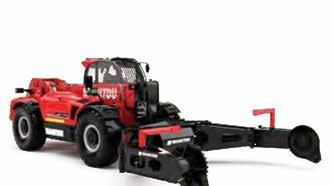
Equipped with an attachment recognition system, which provides an adapted load chart on the in-cab display to ensure that the machine is always operated within a safe working envelope, the MHT range offers greater safety on the site!
















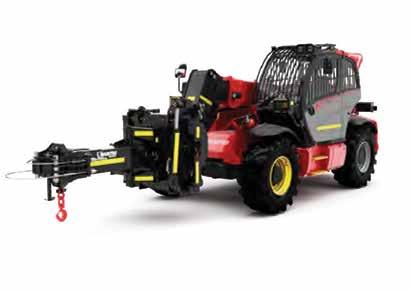

www.manitou.com Represented throughout the African continent through our network of dealers. Tel: +27 11 601 3000 Email: info.msa@manitou-group.com
HEAVY DUTY TASKS NEED HEAVY DUTY SOLUTIONS End-to-End Solutions: Sales Services Training Parts 25 T CAPACITY UP TO
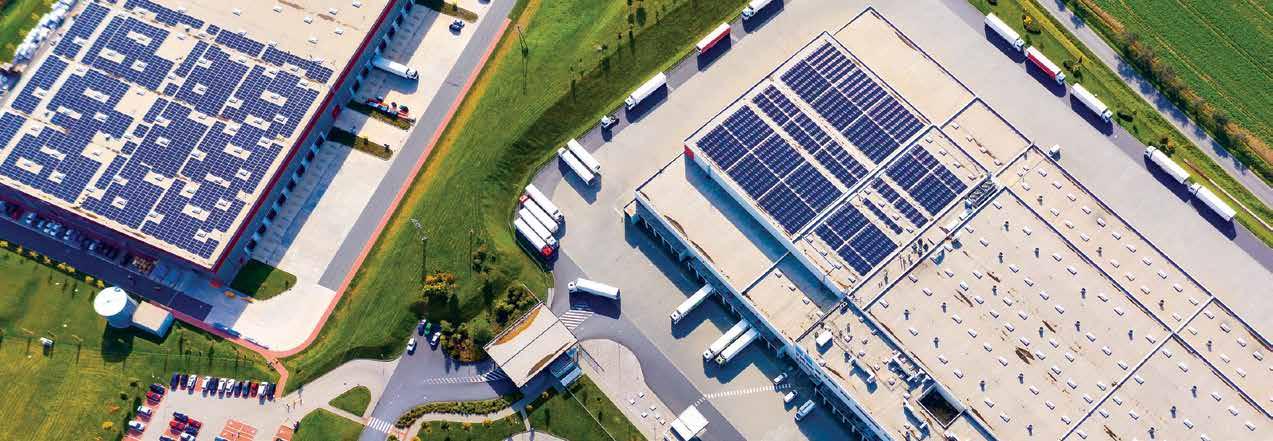
the introduction of third-party access to the freight rail network, flagged to be executed by May 2024,” he says.
With the December 2023 Ctrack TFI 2.7% above the September level, all indications are that the transport sector will contribute positively to Q4 2023 GDP growth and will probably also outperform the broader economy that is forecast to grow by only 0.4% q/q and seasonally adjusted, notes Jordt.
This should seal the full year growth for the transport and communication sector at around 3.5% in 2023, clearly outperforming the broader economy that is forecast to have increased by a mediocre 0.6%.
“The transport and logistics sector is the backbone of the South African economy. The
“
The transport and logistics sector is the backbone of the South African economy. The inability to e ectively move products to and from markets comes at a cost, which has a negative impact on the whole economy. – Jordt
inability to e ectively move products to and from markets comes at a cost, which has a negative impact on the whole economy.
“Not only does it subtract from economic growth, given that products are not timeously available for trading, but the

“
cost of products is typically higher given ine iciencies. An improvement in the e iciencies of the logistics sector could have a multiplier positive impact on the economy as a whole, much needed for South Africa,” he says.


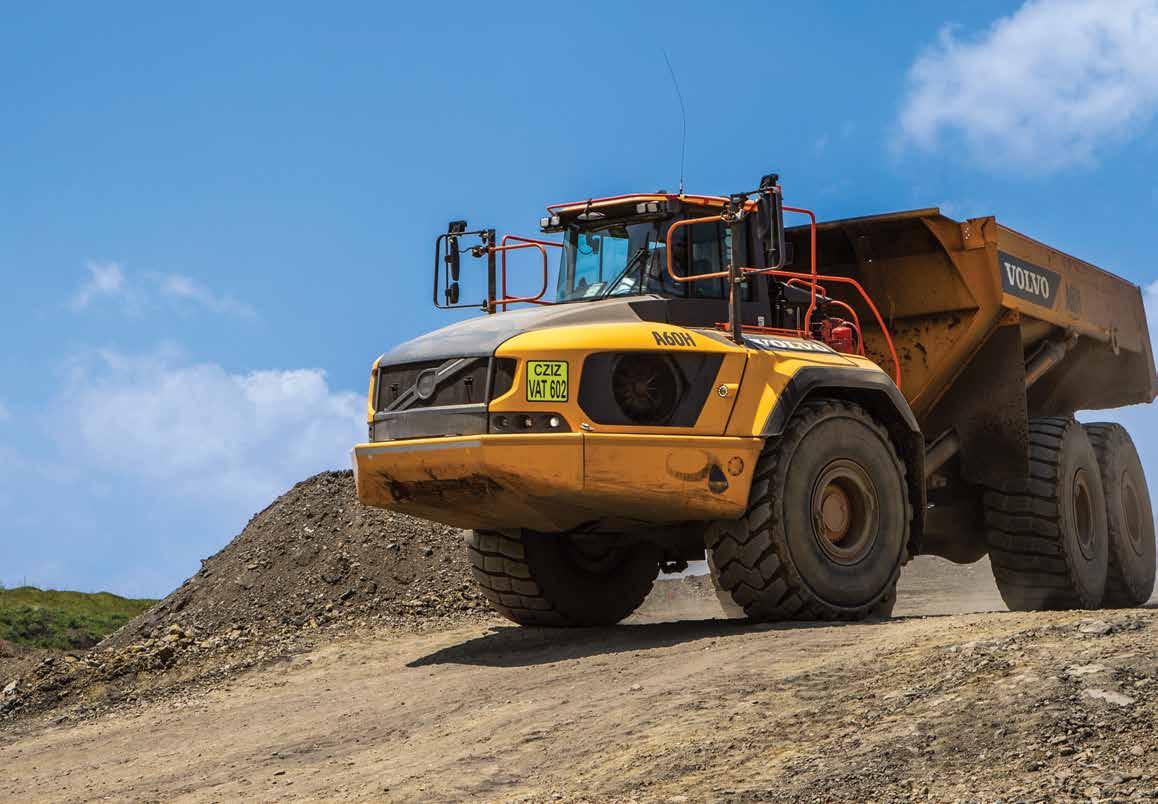




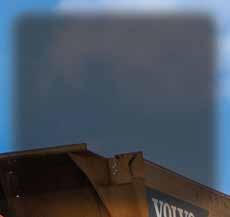
of experience in the mining industry. + 150 years Opencast Mining Drilling & Blasting Bulk Materials Handling Crushing & Screening www.zizwe.co.za MATERIALS HANDLING & LOGISTICS
© ISTOCK –abadonian





































INFRASTRUCTURE FOR ADVERTISING CONTACT Arnold Cruywagen Sales Project Manager Tel: 021 469 2508 Cell: 071 012 5283 Email: Arnoldc@picasso.co.za


Recognising the importance of shifting from a carbon-based economy, the recent Mining Indaba placed a strong focus on the Just Energy Transition.
The annual Investing in African Mining Indaba, which took place in Cape Town in February, presented a groundswell from governments, mining companies, investors and service providers to drive positive change in the industry, particularly around issues like sustainability and the Just Energy Transition (JET).
Climate change remains a critical issue of our time, and in the wake of last year’s United Nations Climate Change Conference (COP28), the global mining industry is at the heart of the transition to green energy. This is both in terms of addressing the reduction in carbon emissions, and how they address the huge demand for green minerals and metals in other industries.
In a Mining Indaba press lounge panel discussion, “What COP28 means for mining”, Anglo American head of sustainability Katie Ferguson highlighted the company’s ambitious targets in reducing its greenhouse gas emissions.
Beyers Nel, COO at Harmony Gold, outlined the company’s response to climate change, noting that the company had
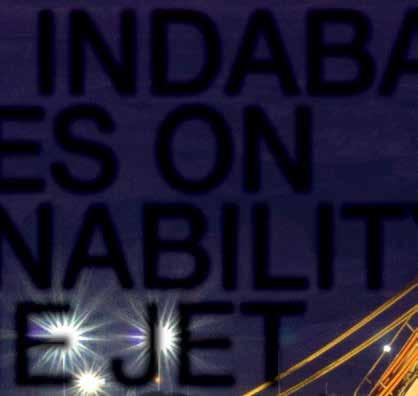
MINING INDABA FOCUSES ON SUSTAINABILITY AND THE JET

already installed 30MW of renewable energy, providing some 6% of Harmony’s peak power needs. Furthermore, Harmony is considering adding another 137MW that would cater for an additional 24% of its needs.
Dr Kojo Busia, executive director at Green Africa Minerals, said a key outcome of the COP28 meeting was the establishment of a loss and damage fund that would help compensate developing nations for the impact of climate change, and the need for Africa to capitalise and do better in terms of green metals.
Finally, Michelle Manook, chief executive at the World Coal Association, emphasised the need to reframe the debate about coal’s role in the energy transition.
A BOOST TO ESG AND THE JET
Speaking on the increasing complexity of mining, Ralf Hennecke, managing director of Omnia Group company BME, noted that this was being driven by a range of factors –from geopolitical tension and fast-changing battery technology to climate change and skills shortages.
“Topics discussed at the Indaba, however,
indicate that positive disruption is underway to build a path forward,” he says.
“This direction was visible in presentations and discussions that emphasised environmental, social and governance (ESG) good practice, responsible mining, company-community engagement, and the JET.”
Meanwhile, as one of the world’s largest producers of green metals, the Democratic Republic of the Congo’s (DRC) Prime Minister Sama Lukonde highlighted key investment opportunities in the nation’s mining sector.
Moreover, he outlined details of the partnership between the DRC and Zambia, to facilitate the development of lithium batteries. This partnership will enable the manufacturing of electric car batteries in what is seen as a key factor in driving poverty alleviation within the two countries.
With an estimated $24-trillion in untapped deposits of cobalt, copper, diamonds, gold and other minerals, the DRC undoubtedly occupies a prominent role in the mining industry in Africa. The country is home to what is quickly becoming the continent’s green energy transition hub through the
www.samining.co.za 32 SA MINING MARCH / APRIL 2024 GREEN MINING
© ISTOCK –heyjojo19

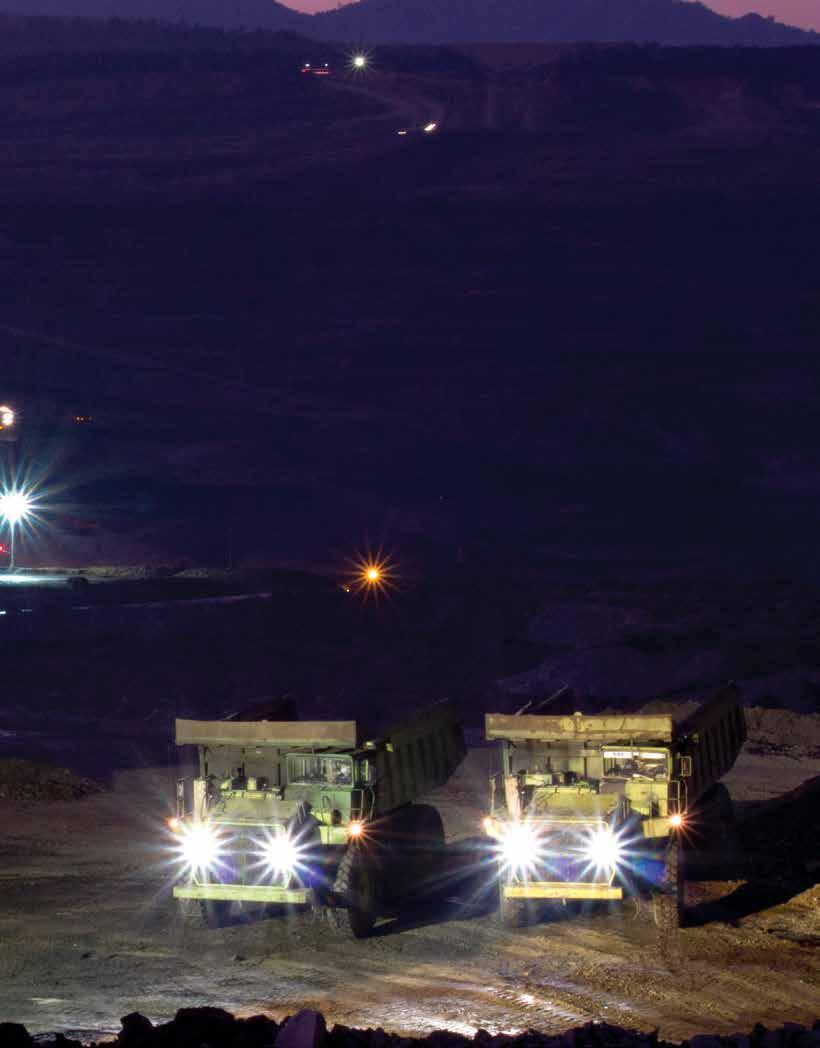
minerals mined and the downstream beneficiation work that is underway.
CRITICAL MINERALS
The Department of Mineral Resources and Energy also announced that it has finalised the appointment of a three-company consortium to install a new cadastre system, to revitalise South Africa’s exploration sector and the development of junior and emerging miners.
South Africa has many of the minerals needed for the decarbonisation of economies and new technologies, but in order to play its role in the global critical mineral economy, the country must urgently revitalise its exploration sector.
“The new cadastre system will expedite the processing of prospecting and mineral right applications, shortening the adjudication of applications. We can anticipate a near-term positive turnaround in the prospects of the industry through increased investment and future growth of mining and stimulus to the economy,” says Mzila Mthenjane, CEO of the Minerals Council South Africa.
The new cadastre system will expedite the processing of prospecting and mineral right applications, shortening the adjudication of applications. – Mthenjane

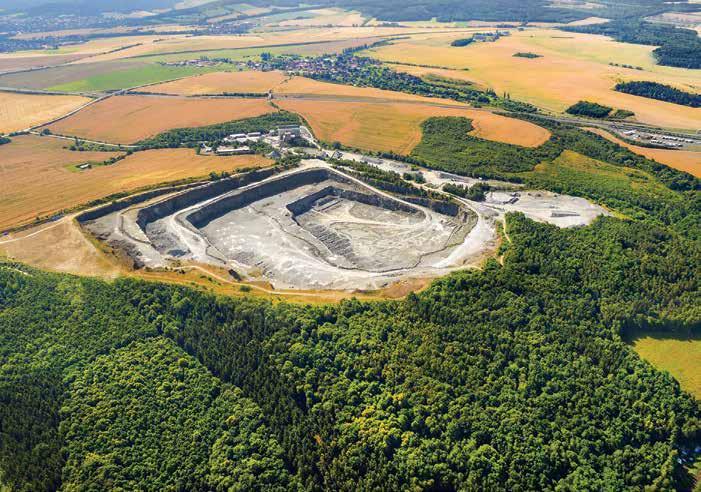
“We need a globally competitive and world-class system to stimulate the mining sector, attract investment to grow the sector, attract new participants, create wealth for
South Africa, and benefit society, especially at a time when there is a global conversation about critical minerals, which South Africa is endowed with,” he says.
www.samining.co.za SA MINING MARCH / APRIL 2024 33
“ “ © ISTOCK –ouraPechkin © ISTOCK –abadonian
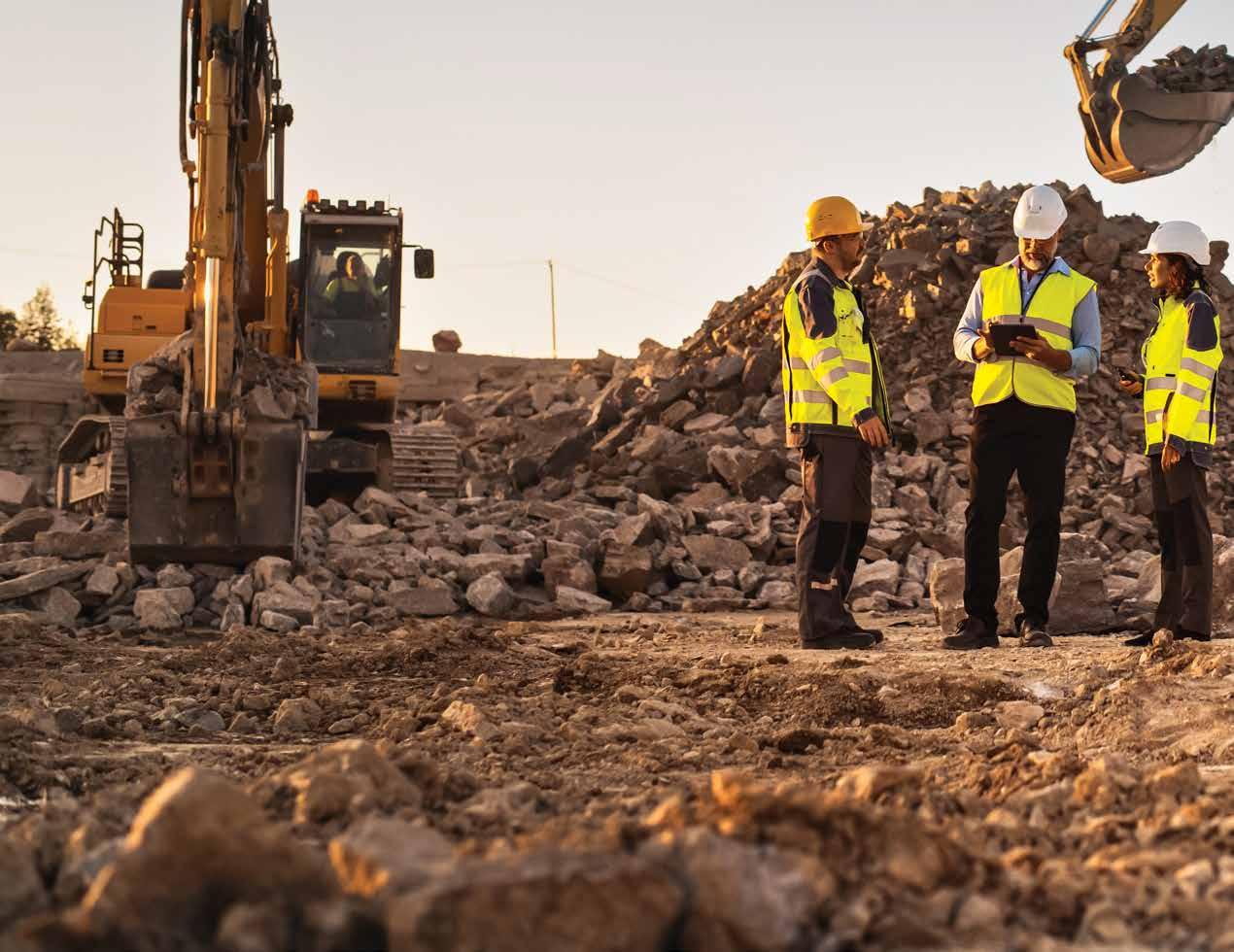
GOOD DATA MANAGEMENT


EQUALS COMPETITIVE ADVANTAGE


Mines, which are decentralised by nature, need to overcome their data management challenges if they seek to be 21st century business leaders.
By Rodney Weidemann
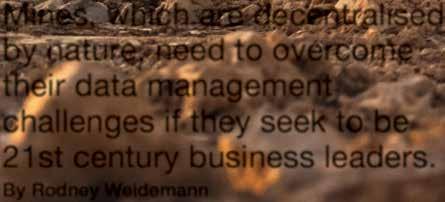
Mining, like other key industries, has recognised the importance of digitalisation, but the nature of the sector means that it faces multiple challenges when it comes to managing, protecting and storing data.
Perhaps the single most crucial factor creating these challenges is the decentralised nature of mining operations, as well as the tendency towards frequent mergers and acquisitions. A lack of consolidated data and centralised data management leaves data vulnerable.
This not only can cause mines to fall foul of the many regulations and compliance requirements governing the industry, but may also impact on safety. A er all, when systems that could potentially cost people their lives crash – whether this is from a ransomware attack or a simple failure – the consequences can be catastrophic.
Therefore, it is vital that mining organisations centralise their data and data management and adopt a holistic strategy, as well as an appropriate data management solution. This will help to prevent unnecessary loss of life, while also unlocking the power of their data for competitive advantage.
According to Hemant Harie, group chief technology o icer at Gabsten Technologies, most mining companies typically operate from a head o ice, o en in another country, as well as at multiple mine sites, which are generally in remote areas.
In other words, the head o ice and the various mines frequently have disparate IT systems, distributed data storage and even completely di erent and potentially unmanaged solutions. For example, all of the equipment at mines – such as that measuring temperature or gas in the sha s – is operated and controlled by the mines, while back-o ice IT systems like payroll are managed by head o ice.
“Traditionally, these two environments do not talk to each other – and the systems between mines themselves do not either –creating a web of disconnected solutions and disparate data sources,” says Harie.
“This means there are no centralised policies or control, no consolidated data governance, no holistic IT management, and many loopholes and vulnerabilities that can be exploited by those with malicious intent.
“It also means that from a data analytics and business intelligence perspective, mining organisations are unable to e ectively leverage the potential competitive advantage.”
CRITICAL BIG DATA CHALLENGES
■ The sheer volume and disparate types of big data make it di icult to integrate and make sense of diverse data formats.
■ Increasing data volumes pose a significant risk of data breaches and cyber-attacks.
■ The emergence of stricter data privacy regulations complicates data handling and sharing practices, necessitating the need for comprehensive data governance and management solutions.
AN ENTERPRISE ARCHITECTURE TEAM
Iniel Dreyer, group managing director for Data Management Professionals SA, points out that another challenge is that of ageing infrastructure, as the organisation has to decide whether to reinvest in new hardware of their own, or choose to work with a service provider to move to the cloud.
“The big issue here is that quite o en, such decisions take time – especially in large, monolithic-type enterprises – which means that equipment ages further, the warranties
www.samining.co.za 34 SA MINING MARCH / APRIL 2024 THE DIGITAL MINE
© ISTOCK
–gorodenko
“Once the team has defined the enterprise architecture, they should look at the IT systems and ensure that the same systems are implemented across all parts of the mine. In this way, they can e ectively monitor and control these systems, thus deriving additional business value from them.”
TANGIBLE BENEFITS
Among the benefits outlined by Dreyer are reductions in administration costs obtained
from having the back-end systems centralised. Furthermore, he says, it reduces the amount of IT infrastructure, as consolidation of equipment inevitably takes place. Finally, with easier access to data that is correct and up to date, it allows the mine to react proactively to incidents, rather than a er they have occurred.
“You ultimately want to achieve an intelligence level that allows your systems to learn from each other, because you have

EXPLOSIVES CORPORATE PROFILE
all the data in one place. This enables you to be proactive in mitigating risks.”
Harie adds that not all data is created equal, and not all systems are mission-critical, but without proper data management it is all but impossible to e ectively prioritise and understand how to rebuild in the event of a disaster.
“The central management of IT assets, alongside data management and security, is crucial, and it needs to incorporate next-generation data protection solutions such as cyber-deception, cyber-resilience and artificial intelligence.”
Dreyer, meanwhile, points out that having an overarching IT, compliance, risk and data management framework, one that covers everything in the mine – from business to remote locations, operations and more – is a significant challenge.
“However, this is also vital, not only from a cyber-security perspective, but also for the safety of employees. This becomes even more important in the event of an acquisition, when new systems and data need to be integrated, understood, and protected.
“Without it, the risk of continued data disparity and silos will increase, and mines might be le unable to leverage their data e ectively for analytics and competitive advantage,” he says.
MINING ECOSYSTEM EMBRACES GROWING COMPLEXITY
The formation of closer industry partnerships is helping the mining sector to address new, urgent priorities, like ESG, climate change and skills shortages.
As mining becomes a more complex endeavour, mining companies and their technology partners in the minerals ecosystem are rising to the challenge, according to Ralf Hennecke, managing director of Omnia Group company BME.
“The factors behind recent trends in mining range from geopolitical tensions and fast-changing battery technology to climate change and skills shortages,” he notes. “There has also been a growing focus on environmental, social and governance (ESG) good practice, responsible mining, companycommunity engagement and the just energy transition.”
In response, closer partnerships have been developing between companies like BME and their customers, and these help to more e ectively address these priorities. Underpinning this collaboration has been a joint commitment to safety, operational e iciency, business continuity and people development in the sector.
In terms of the human factor, BME general


manager: technology and marketing Nishen Hariparsad highlights recent research into the dearth of skills in many mining-related disciplines.
“Over 70% of mining leaders have indicated that talent shortages are holding them back from delivering on production targets and strategic objectives,” says Hariparsad. “This clearly indicates a need for mining to make itself more attractive to young talent.”
He says BME is also aware of this
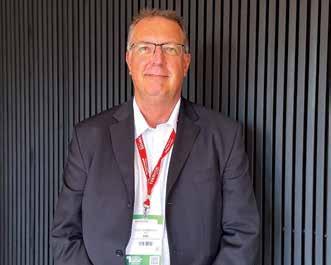

priority, and is embracing technology to forge solutions for mines that help drive their mandate for safety, productivity and sustainability.
BME’s pioneering work in fields such as electronic detonation and digital blasting tools is creating career opportunities for young professionals in exciting fields like data science and so ware development, he says. “These e orts are helping to change the face of mining and make it more relevant to a growing range of professional disciplines.”
EQUIPMENT COVER STORY www.samining.co.za 36 SA MINING MARCH / APRIL 2024 © ISTOCK –shironosov THE DIGITAL MINE
Nishen Hariparsad.
Ralf Hennecke.
TATA MOTORS LAUNCHES RANGE OF NEW-GENERATION, SMART TRUCKS
Tata announces the launch of a new range of multipurpose heavyduty trucks to cater for for safer, smarter and greener cargo mobility. Motors’ flagship connected vehicle system, the Fleet Edge, for e icient fleet management that helps further increase fleet productivity.
Tata Motors has announced the commercial launch of its successful range of multipurpose heavy-duty trucks – Ultra T.9 and Ultra T.14, in South Africa. Designed to fulfil the rising need for safer, smarter and greener cargo mobility, the Ultra is perfectly suited for a wide variety of conventional and specialist logistics applications. The Ultra range is engineered to deliver high productivity with best-in-class power & torque and fuel e iciency with lower total cost of ownership (TCO).
The new range features a walk-through cabin, power steering, dashboard-mounted gear lever, booster assisted clutch and mechanically suspended seat, for safe and fatigue-free driving. Powered by Tata Motors’ globally proven turbocharged diesel engines with best-in-class power and torque output, the Ultra T.9 (powered with a 3.3L engine) and Ultra T.14 (powered with a 5.0L engine) provide a reliable solution to comfortably carry heavy loads over long distances and rough terrains.
The trucks come equipped with parabolic suspension for rugged and uninterrupted operations. The trucks are o ered with Tata

“Over the last three decades, Tata commercial vehicles have earned a rich reputation with their exceptional functionality, high productivity, unmatched comfort, advanced connectivity and unparalleled performance. We have consistently set new benchmarks by introducing smarter and future-ready products across various vehicle segments,” Anurag Mehrotra, Head: International Business, Tata Motors Commercial Vehicles.
“The launch of the latest Ultra range in South Africa marks a new landmark in freight transportation in the country. Built on the internationally recognised Ultra platform, these trucks are engineered to cater to a diverse set of applications, deliver higher performance, vehicle utilisation, uptime and more revenue. We are committed to enabling our customers in South Africa succeed and the launch of this Ultra range is a significant step forward in fulfilling this commitment.”
UNLOCK YOUR SKILLS POTENTIAL IN MINING
Explore the world of mining through our pragmatic crafted courses, curated to empower individuals with the knowledge and skills needed to excel in this thriving industry. Whether you are an aspiring professional seeking to enter the field or a seasoned veteran aiming to enhance your expertise, our comprehensive curriculum caters to all levels of proficiency. Take the necessary step towards a successful career in mining or elevate your team’s competencies with our customised training solutions.





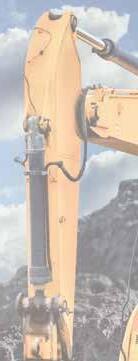













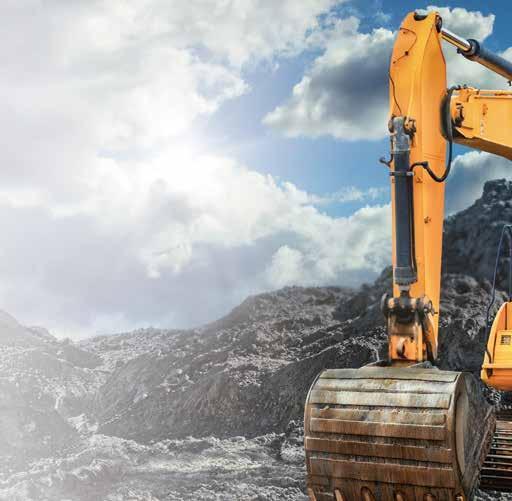



















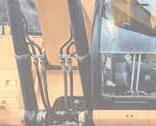























MINING EQUIPMENT
programmes Shifting knowledge to insight CONTACT US +27 (0)12 434 2500 | info@enterprises.up.ac.za | www.enterprises.up.ac.za CLICK HERE TO VIEW COURSES
with our short courses and



PUTTING THE CASE FOR POLYURETHANE PUMPS
Polyurethane slurry pumps offer a compelling combination of wear resistance, chemical compatibility, high durability, effi ciency and safety, all while reducing maintenance and operational costs.
In most mining processes, pumps are seen as a vital part of the operational equipment, and are o en referred to as the “heart” of the operation. Ultimately, reliable, e icient pumps are essential to ensure profitable and safe operations.
There are many challenges in today’s mineral processing sector. There is an increased demand for large mass volume high-grade products, in a volatile market that is influenced by many factors. These include environmental matters, politics, resources, lower ore grades, and increasingly, energy and water constraints.
According to Marc Young, pump applications and projects manager (Africa) at Schurco Slurry, to overcome such challenges, it is important for mines to have access to a wide variety of pump ranges. These encompass slurry pumps, vertical spindle, and dewatering pumps, as well as accessories that have been developed to cater to modern mineral processing demands and constraints.
TRAINING AND DESIGN
“Understanding this, Schurco Slurry’s development strategy is synchronised with the ever-changing technologies and innovative processing methods. The company constantly invests in research and development (R&D) to ensure that it can o er economically viable and sustainable solutions,” he says.
“There is also a continuous focus on the development and training of our team, to ensure our products, services, and supply can meet the modern minerals processing challenges and demands.”
To this end, notes Young, Schurco invests significant resources in continual training and development, to ensure the team selects and supplies the correct pump – per the specific application requirements – and updates pumps with the latest technological developments.
The selection of suitable pump build materials is another key factor in ensuring that the pumps that are installed not only operate e iciently, but also have a long wear life. Long periods of downtime on a mine site can result in massive losses in capital value in production.
“There are many factors to consider when it comes to slurry pump selection, which is why we believe that our extra attention to detail makes all the di erence.
“For Schurco, it is about an engineering approach that cultivates a personal touch. Our focus is not just to make a sale, but rather to work with the customer/end-user to design a cost-e ective, e icient and reliable solution, designed for their specific requirements.
“Our engineering focus is to design and supply the best-quality materials and products, in line with engineering best practices, to ensure the customer/end-user
receive quality service,” he says.
R&D is essential in the ongoing development and improvement of slurry pumps, as this enables enhanced e iciency, reduced costs, improved durability, and the ability to meet the evolving needs of customers and regulatory requirements in various industries. Young says testament to this is that all Schurco Slurry pump parts have been rigorously reverse-engineered, using the most robust 2D and 3D modelling technology.
BETTER COMPOUNDS
“We o er wet-end spares that are manufactured from our specially formulated polyurethane compound, which forms part of our own proprietary mix, and is developed with the assistance of the base-compound suppliers,” he says.
“Polyurethane is a proven corrosion- and abrasion-resistant material, owing to its unusually high tear and chemical-resistance properties. This has led to an increased wear life that is about 66% longer than that of other linings in the market.”
Therefore, polyurethane-lined slurry pumps are a vital component in various industries, notably mining, mineral processing, and wastewater treatment. Their popularity stems from a range of impressive features, which make them indispensable for handling abrasive and corrosive materials e iciently.
www.samining.co.za 38 SA MINING MARCH / APRIL 2024 PUMPS, PIPES & VALVES CORPORATE PROFILE

POLYURETHANE POSITIVES
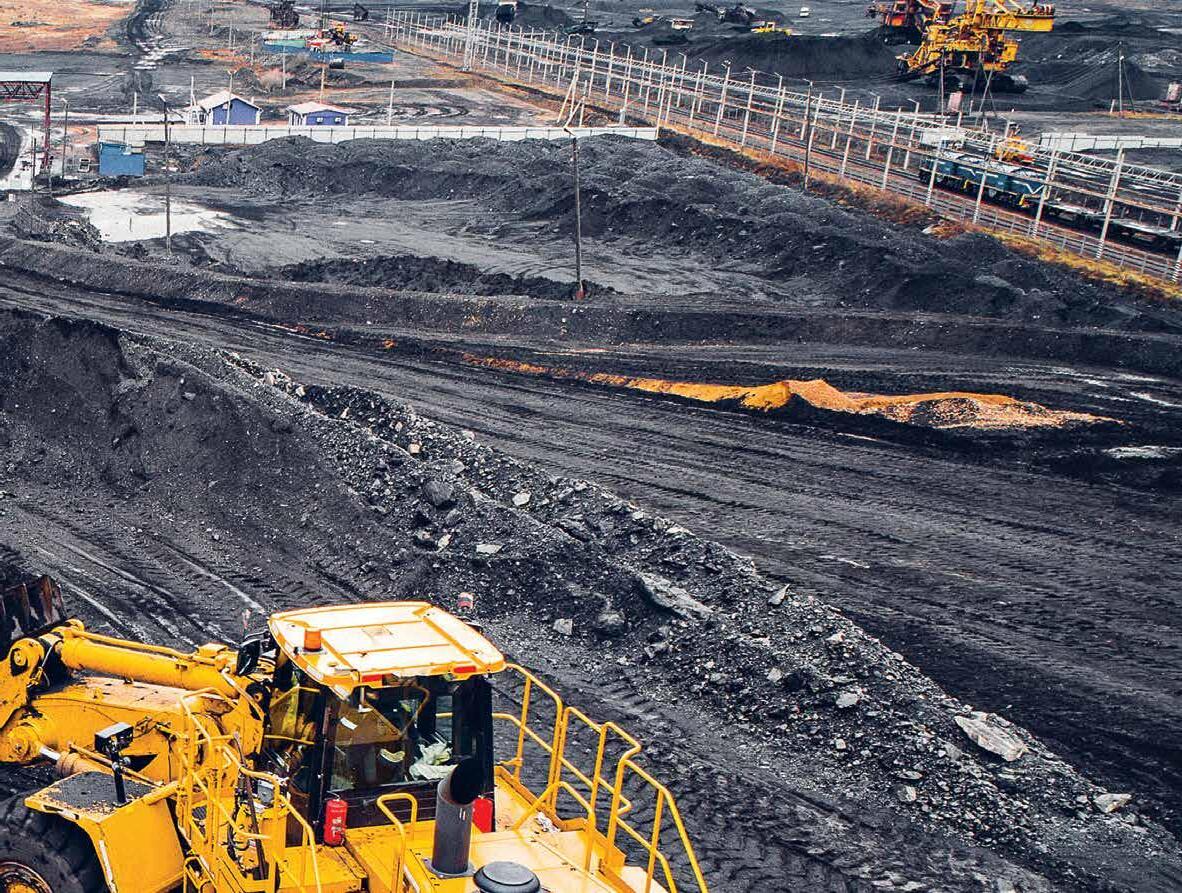
Polyurethane-lined slurry pumps are a vital component in various industries, notably mining, mineral processing, and wastewater treatment. – Young
“For one, polyurethane o ers a high level of safety during maintenance, as there are no razor-sharp edges as there are with worn metal components. It also reduces noise and vibration, thanks to its inherent dampening properties, creating a quieter and more comfortable working environment. This is especially important for applications in close proximity to workers,” says Young.
“In addition, polyurethane impellers have a smoother surface texture, reducing drag and friction, thereby maximising hydraulic e iciency, ensuring lower energy consumption and reducing operational costs. Polyurethane slurry pumps also tend to have modular designs, making maintenance and replacement of components straightforward. This helps to minimise downtime and keep operations running smoothly.”
He adds that manufacturers can also easily tailor polyurethane slurry pumps to meet specific operational requirements, by adjusting the impeller size, pump speed, or other parameters, in order to optimise performance. These pumps also feature
abrasion-resistant linings that deliver an additional layer of protection against wear, extending the life of critical components.
THE PERFECT COMBINATION
“It is also worth mentioning that polyurethane is a relatively eco-friendly material, especially when compared to alternatives like rubber or metal. A er all, it is recyclable and produces fewer emissions during manufacturing.”
He indicates that polyurethane not only has a substantially longer shelf life, but also improves with age as a result of increased curing time. No special storing requirements are necessary either, as it is UV- and weatherresistant.
“Due to its high tear resistance, there is a substantial lowering of the risk of mechanical damage during handling, whereas rubber and synthetic elastomers tear easily, and metal is very brittle.
“In conclusion, polyurethane slurry pumps o er a compelling combination of wear resistance, chemical compatibility, high
Exceptional wear resistance: Polyurethane is renowned for its outstanding wear resistance, and high tear resistance, making it an ideal material for slurry pump components. Its ability to withstand most abrasive particles and erosive forces ensures a longer pump lifespan and reduced maintenance costs. Due to its high tear resistance, polyurethane impellers can operate at higher tip speeds than other elastomer materials, typically 30m/s versus 24m/s.
Chemical compatibility: Polyurethane is highly resistant to a wide range of chemicals, acids, and alkalis. This property is crucial when dealing with corrosive slurries, as it prevents chemical degradation and ensures the longevity of the pump.
Lightweight and durable: Polyurethane-lined slurry pumps are notably lightweight compared to their metal counterparts. This feature makes installation and maintenance more manageable while maintaining durability and performance.








durability, e iciency and safety. Their ability to handle challenging slurries, while reducing maintenance and operational costs, makes them an indispensable asset in industries that rely on the e icient transport of abrasive and corrosive materials.
“In summary, these pumps are not only dependable, but also contribute to a more sustainable and e icient industrial landscape,” says Young.
www.samining.co.za SA MINING MARCH / APRIL 2024 39
© ISTOCK –agnormark
“ “
EFFECTIVE DEWATERING REQUIRES FIT-FOR-PURPOSE ACCESSORIES

Dewatering in mines is not a task that can be conducted with pumps alone; specialised and fi t-for-purpose accessories are also vital to achieve the expected result.
While customers may recognise that they need a dewatering solution, they might not always be able to specify the exact accessories that must accompany the pump to get the best outcome. This is why it is always recommended that they discuss such issues with pump experts, before investing in the specific solution.
Common accessories in pumping solutions include lay-flat hoses, suction hoses, foot valves, high-density polyethylene (HDPE) piping and hose flotation devices. These must all be sized and specified according to the demands of the selected pump and the duty that the application demands.
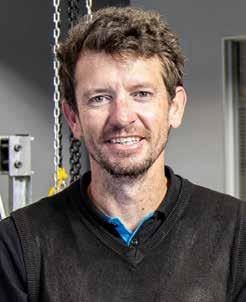
 By Steve du Toit Sales Manager at IPR
By Steve du Toit Sales Manager at IPR
Correct sizing of pipes – according to their internal diameter – is one of the essential starting points. Lay-flat hoses can be used on the discharge end, while rigid pipes are necessary for the suction side.
Furthermore, flow meters may also be required, to provide customers with an accurate rate of water flow at the discharge point of the pump. This is vital information to demonstrate that the expected volumes of water are being removed for the customer’s purposes. In addition, it may also be a requirement of the customer’s water-use licence.
Beyond this, there are the electrical components to consider. For example, the pump control systems need to be designed to suit the pump and its application. Measurement devices, such as gauges on the suction port and delivery port, are also important when it comes to monitoring that the pump is operating at optimal e iciency.
With the growing focus on environmental impact management, there is increasing value in accessories such as dewatering bags. These porous bags catch and retain sediments and other material that could contaminate the natural environment. At the same time, they allow cleaner water to seep out, facilitating dewatering in a responsible manner.
Among the most important accessories are the flotation devices for hoses and pumps. On diesel-driven self-priming units, for instance, it is recommended that customers use suction hose floats to prevent the hose end from sucking in mud and stones, ultimately resulting in damage to the pump unit itself.
Similarly, with submersible electric pumps, it is advisable to use a pump flotation device (PFD). This ensures that the pump is always just below the surface of the water. It therefore does not become buried in mud or silt, which could undermine its performance and cause mechanical damage. The use of a PFD also makes it easy to locate the pump, while the floats show where the discharge piping and electrical cable is positioned at all times.
To ensure the best possible solutions, including accessories, it is important to choose a trustworthy partner – one that o ers a wide range of accessories and will spend time carefully assessing your specific site conditions and technical infrastructure “ “
To ensure the best possible solutions, including accessories, it is important to choose a trustworthy partner – one that o ers a wide range of accessories and will spend time carefully assessing your specific site conditions and technical infrastructure. This will ensure that all aspects of the solution are attended to, with high-quality accessories provided wherever necessary.
Another protection measure that should be considered is a non-return valve, which is installed in the discharge pipe in close proximity to the pump. This ensures there is no back-pressure on the pump from water in the pipe; this type of pressure can cause serious damage – such as sha breakage –when the pump is started.
With a submersible pump, there is also the danger of this pressure causing the pump impeller to spin in the wrong direction when started, something that has the potential to cause the impeller to loosen.
Finally, it is worth reminding the industry that whatever pump accessories are used, these should always be of a high quality. The risk of malfunction is costly, and significantly more expensive than the savings obtained on a cheaper item. Essentially, “buying cheap” invariably leads to “buying twice”, so sourcing high-quality accessories is key to longer-term savings.
The views expressed are the author’s own and do not necessarily reflect SA Mining’s editorial policy.
www.samining.co.za 40 SA MINING MARCH / APRIL 2024 COLUMN PUMPS, PIPES & VALVES












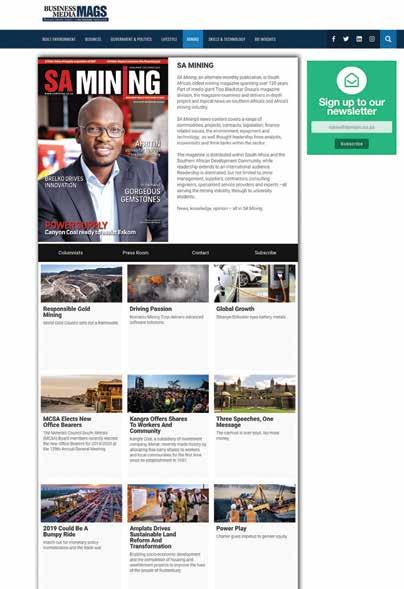








© istock m_a_n ADVERTISING: Ilonka Moolman 011 280 3120 moolmani@samining.co.za Tshepo Monyamane +27 62 239 3538 Tshepom@samining.co.za www.linkedin.com/company/samining/ businessmediamags.co.za/mining/sa-mining/subscribe/ www.facebook.com/businessmediaMAGS/company/samining/ twitter.com/BMMagazines To visit our website. www.instagram.com/business_media_mags/ WHY ADVERTISE ONLINE ● ADDED VALUE/EXPOSURE TO YOUR BUSINESS VIA ONLINE CONTENT.
Help build/strengthen your company’s brand. ● DRIVE TRAFFIC TO YOUR COMPANY’S WEBSITE. ● Expand your reach with various packaged o erings suited to your company’s needs, such as bundling your advertising with news/corporate pro les and/or a video online. SA Mining, South Africa’s oldest mining magazine, has been providing insight into the local, Southern African and African mining space for 125 years. Banner 728 x 90 px Island Medium Rectangle 300 x 250 px YOUR ADS HERE COMBINE DIGITAL WITH PRINT FOR GREAT SAVINGS! We are now giving our readers and clients an opportunity to take their news and advertising online in real time through www.samining.co.za HERESCAN
●


The recent Africa Mining Indaba highlighted the need for investing in the growth of small and medium enterprises within the mining sector.
For small business development specialist Edge Growth, the recent Investing in Africa Mining Indaba in Cape Town proved an invaluable opportunity to further entrench the important role it plays in developing small and medium enterprises (SMEs), increasingly within the mining sector.
Mining is becoming an important player, given commodity price booms coupled with host community pressures. Benefitting host communities within the mining sector has long been a priority for the industry. When employment opportunities are not created within these communities, and they do not stand to benefit from the mining operation, a mine’s social licence to operate is at risk.
Noluvo Nela, Edge Growth investment principal and Edge Action Fund owner, says the Investing in Africa Mining Indaba reinforced the important role that Edge Growth and other specialists in SME development play in helping corporates maintain their social licence, while aiding the creation of thriving communities.
Nela says the Indaba provided valuable insight into the types of SMEs that are looking for funding, as well as the opportunity to build relationships with small businesses that are already fully operational and meet the mandate requirements for their existing mining portfolios.
Another key insight were the challenges of those SMEs working within the somewhat stagnant platinum sector, compared to the current business opportunities for those servicing the gold mining sector.
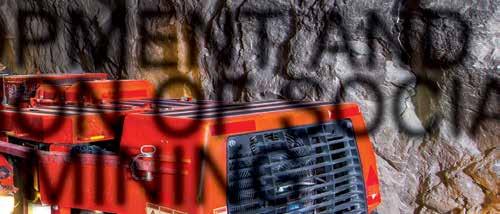
SME DEVELOPMENT AND THE RETENTION OF SOCIAL LICENCES IN MINING


Nabeela Vally, head of business development at Edge Growth, says a strong theme from this year’s event was the many conversations around communities’ needs, as well as the importance of empowering women in the sector. This on top of the Indaba providing the opportunity for role players to engage with senior decision makers in mining.
“This is where the world of Edge Growth and the mining sector really align and reinforce the relevance of the work that we do. Forward-looking macroeconomic trends are indicating contraction within a number of commodities, which impacts the degree of support to host communities.”
This adds pressure on mines to maintain their commitments, in order to retain their
social licence to operate, he says. “Thus working with the right partners becomes vital. Edge addresses this risk using holistic support, which includes getting SMEs investment-ready and providing them with a ordable, more accessible funding –enabling SMEs to ignite job creation in host communities more sustainably.”
With its primary objective being to attract new investors for Edge Growth’s funding o erings among the major mining houses and corporates in the industry, the result reinforced the relevance of focused SME development through experienced service providers. It also highlighted the benefits that an impactful SME development approach can have for mining companies and communities alike.
www.samining.co.za 42 SA MINING MARCH / APRIL 2024 MAKING MINES WORK
gnormark
© ISTOCK –
© ISTOCK –Laprise

GRINDING APPLICATIONS WITHIN THE MINING INDUSTRY













As a local manufacturer of premium abrasives, Grinding Techniques (Grindtech) is well aware of the many challenges the mining industry faces. With a solutiondriven approach, the company is perfectly positioned to assist in the improvement of safety and operational processes, with the perfect balance between quality and cost.
Knowing that the safety of workers is paramount to applications involving abrasives, Girndtech is a proudly Organisation for the Safety of Abrasives (oSa)-certified manufacturer, which puts it at the top of preferred abrasive suppliers.
Specific to applications within the mining sector, the business has developed the first ever Type 28 dual purpose cutting


and grinding disc - the Superflex Cut Grind. Designed and manufactured to safely operate as an e ective cutting and light angle grinding disc, it is primarily used on back grinding of welds, yet also suitable for blending and under cutting repair work.
With safety as one of the core priorities, this disc was designed with the intention of replacing the application of using a conventional cutting disc to grind and deburr materials – a dangerous application o en leading to potential breakages with possible injuries on application. As the Superflex Cut Grind disc reduces a two-step process to only one, less disc changes are required, e ectively increasing e iciency, while reducing down-time.
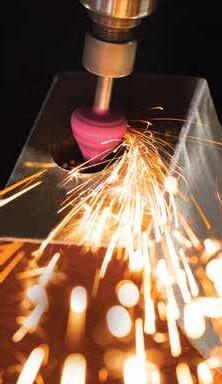



With our custom product solutions, we also o er full operator training to ensure maximum output and safety on application .

Apart from the Superflex Cut Grind, Grindtech’s comprehensive abrasive range includes various products suited to miningbased applications from cutting and grinding discs, to precision grinding wheels and finishing products.
For high alloy and stainless steels, the company o ers a range of Zirconia Alumina and Ceramic abrasives, which have specifically been developed to provide more e icient result. These steels are used more o en in mines, due to their ability to resist corrosion, and they thus require abrasives that are free from contaminants.
MINING EQUIPMENT CORPORATE PROFILE
A Company of the Tyrolit Group www.grindtech.com +27 11 271 6400 | info@ grindtech.com YOUR APPLICATION, OUR SOLUTION

TIME TO UNLOCK JUNIOR INVESTMENT AND DEVELOPMENT OPPORTUNITIES
The well-regarded Junior Mining Indaba – scheduled for late May – is going from strength to strength as it celebrates its 10th edition.
The Junior Mining Indaba, set to take place on 21 and 22 May in Johannesburg, will represent a full decade of this incisive, informative and frank mining event, which has become a popular meeting place for junior miners.
This year, much of the discourse is expected to focus on the challenges of, and opportunities for, junior mining and exploration in South Africa and elsewhere in Africa. These discussions will be framed within the geopolitical, socio-economic and energy shifts taking place across the globe, and their impact on the junior mining sector.
Specific topics include the demand for critical metals; the global outlook for commodities; investors’ perspectives on
junior mining projects; environmental, social and governance considerations; and more.
Despite the event’s name, far more than just junior and mid-tier mining companies will be represented. Expect to also find resource and exploration companies; large-scale mining companies; members of the finance and investment community; representatives from stock and commodity exchanges and the mining services industry; government policymakers and regulators; others from infrastructure and energy parastatals; consultants and mining entrepreneurs; and legal advisories and law firms.
Last year’s ninth edition of the Junior
Indaba was a great success, with 470-plus African junior miners attending and having the opportunity to network with 900-plus investors. Some 73% of the global investors who were there were looking to invest in the development and exploration stages.
Last year also saw 75% of junior miners closing the week with lucrative investment deals and 73% in promising investment prospects. With specific programme streams and networking programmes dedicated to facilitating one-on-one connections between investors and junior mining companies only, expect the 10th edition of the Junior Mining Indaba to deliver on juniors’ core needs –securing investment and gaining tips on increasing their overall appeal.
Premium Sponsors: Lead Sponsor:
Mining Industry





21 - 22 MAY 2024 www.juniorindaba.com The Country Club Johannesburg, Auckland Park & Online 10TH ANNUAL EDITION FOR EXPLORERS, DEVELOPERS & INVESTORS IN JUNIOR MINING Contact us about sponsorship opportunities: sponsorship@resources4africa.com Tel: +27 (0) 11 463 7799 // +27 (0) 61 421 9492 // registrations@resources4africa.com The 2024 Junior Indaba is brought to you by Resources 4 Africa, the organisers of the Joburg Indaba. Resources 4 Africa is pleased to announce the 10th edition of its annual Junior Indaba, a popular meeting place for junior miners which is enjoyed by all for its incisive, informative and frank discussions tackling the challenges and opportunities for exploration and junior mining companies in South Africa and elsewhere in Africa. This year discussions will focus on the role of juniors in meeting the demand for critical metals, the global outlook for commodities, investors’ perspectives on junior mining projects, ESG considerations and more. We will feature a number of junior mining success stories, as well as our regular features - Myth Busters and a showcase of presentations from junior miners across the continent.
Partners: Networking
M&D AFRICA
Sponsors:
© ISTOCK –kasto80






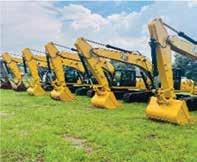

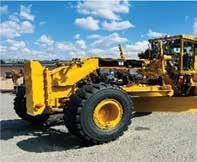







1x

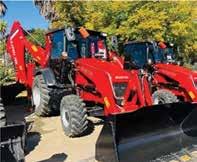





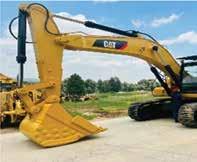

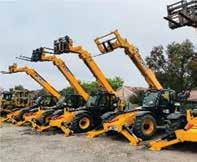








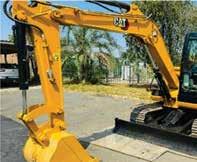







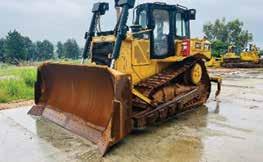

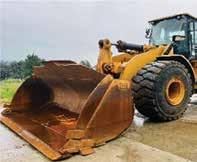

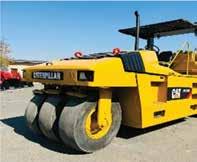

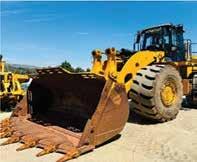






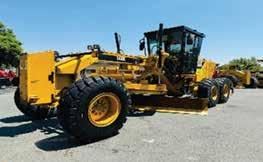

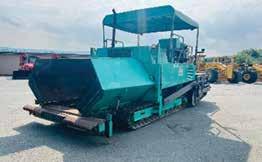








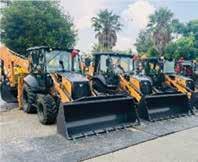




www.associatedequipment.co.za Duncan: +27 (0) 83 626 5588 Anton: +27 (0) 82 923 5397 Jaap: +27 (0) 82 892 1327 Loraine: +27 (0) 76 021 4344 Office: +27 (0) 11 801 4911 vendels@mweb co.za associatedloraine@xnet.co.za ves@xnet.co.za Plot 92 Indaba Lane-off Beyers Naude, Rietfontein, Roodepoort, South Africa We Are Buyers For Your Good Running Redundant Equipment GPS COORDINATES: S26°3”56.343 – E37°52”37.453 • www.vendelequipmentsales.co.za
New 2023 CAT 323D3 Excavator’s 1x New 2021 CAT 320D3 Excavator Piped For Hammer 1x 2021 CAT 320D3 Excavator 1x 2021 Volvo EC210 Exc (Only 1800Hrs)
2005 CAT 16H Motor Grader With Ripper-Refurbished (Engine Rebuilt) 1x 1983 CAT 16G Motor Grader-Refurb 1x 1984 CAT 14G Motor Grader
2018 Doosan DA40 ADT’s
2017 CAT 730C2 ADT’s 6x6
2004 Terex TA30 6x6 ADT
2x
1x
3x
3x
1x
2016 CAT CB24B Sit On Roller
2005 HAMM 3414 SD Roller
2000 HAMM DV6 DDV Roller
New 2022 Manitou MBL745 4x4 TLB
2014 Manitou MT1440S Telehandler
1997 CAT 428C 4x2 TLB 1x 2012 CAT 336DL Excavator 1x 2015 Komatsu PC300-8 Excavator 1x 2018 CAT M320D2 Wheeled Exc 1x 2021 CAT 320D3 Exc (Only 2000 Hrs) 1x 2022 CAT 323D3 Exc (Only 2000 Hrs)
2019/17 JCB 540-170 Telehandler 4x 2019/17 JCB 540-140 Telehandler 1x 2016 JCB 535-125 Telehandler 1x 2018 Manitou MT1840 Telehandler 3x 2017 CAT 730C2 ADT’s 6x6 3x 2018 Doosan DA40 ADT’s 6x6 1x 2004 Terex TA30 ADT 6x6
2013 Powerstar VX4035 Twinsteer 18000 Lt Water Tanker 1x Mercedes Axor 18000 Lt Water Tanker 1x2019 CAT 305.5E2 Mini Excavator 6x New 2023 AGT QS12R Min Exc 1x New 2023 AGT L12 Mini Excavator 1x 2018 Volvo EC750 DL Excavator-Fully Refurbished (75Ton) 1x 2006 Hyundai Robex 500LC-7A Excavator-Refurbished 1x 2017 Volvo EC750 DL Excavator 1x2017 CAT D6R2 Dozer-Refurbished 1x 2014 Komatsu D65EX-16 Dozer -Refurbished 1x2008 CAT 824H Wheel Dozer 1x 2018 CAT 966L Front End Loaders 2x 2011/2010 CAT 966H F.E.L’s 1x 2013 CAT 950H F.E.L 1x 2007 CAT PF300C 7 Wheel PTR 1x 2009 Dynapac CP221 PTR 1x 2014 CAT 986H F.E.L-Refurbished 1x New 2022 SDLG L956F F.E.L 1x 2018 CAT 966L F.E.L (Low Hours) 1x 2019 CAT 140K Motor Grader 1x 2010/06 CAT 140H Motor Grader (In Workshop) 1x 1987 CAT 140G Motor Grader-Refurb 1x 1994 CAT 140G Motor Grader-Refurb 1x 1997 Vogele 1800 6-68 Asphalt Paver 1x 2009 Dynapac DF145P Asphalt Paver 1x 2008 CAT AP600 Asphalt Paver 1x 2006 Etnyre K Chip Spreader 4x2 1x 2005 Etnyre K Chip Spreader 4x4 1x 2014 Bomag BW213DH-4 BVC Roller 1x 2014 Bomag BW212D-40 PD Roller 1x 2009 CAT CS533 SD Roller 2x New 2022 CASE 770FX Series 4x4 TLB 2x New 2023 CASE 770EX Series 4x4 TLB With 6IN1 Bucket (Coming Soon)
1x
1x
2x
1x
1x
2x
1x










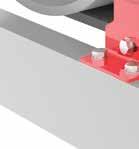
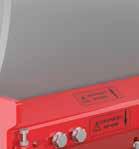
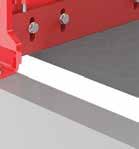









•
•
•
•
•
•
•
© ISTOCK APPLICATIONS
FEATURES
Nip Guards improve worker safety around head, tail, and drive pulleys and prevents worker exposure to conveyor pulley nip points and pinch point hazards.
Easy
installa�on.
Low
maintenance.
Simple design.
Operates in all condi�ons.
to SABS, CEMA,
PROK moun�ng
Manufactured according
Australian and
standards.
Unique
guard
constant gap between the conveyor
and guard, even when the conveyor belt is tensioned.
Robust construc�on for longer life.
Can be installed on bi-direc�onal conveyor belts. Tel : +27 11 013 4000 Fax : +27 11 013 4150 E-Mail : sales@brelko.com Website : www.brelko.com BRELKO NIP GUARD SAFETY DEVICE PATENTED NEW PRODUCT BRELKO CONVEYOR PRODUCTS ® SERVICEEXCEL L ECNE 35 OVER YEARS AECI Mining 8-10 Bara Consulting 13 BLC Plant Company IFC Brelko Conveyor Products 46 BME (A member of the Omnia Group) 35-36 Council for Geoscience ................................................................ 14-15 Enterprises University of Pretoria ...................................................... 37 Envass 22-23 Grinding Techniques 43 Invincible Valves 7 Manitou SA 29 Marthinusen & Coutts 27 Mineral-Loy 16-17 Normac Adhesives / RDT Engineering ............................................ IFC Schurco Slurry ............................................................ 1, 2, 38-39, OBC Toyota Land Cruiser 70 5 Vendel Equipment Sales 45 VME Group 3 Zizwe 30 INDEX TO ADVERTISERS TO ADVERTISE IN ADVERTISING Ilonka Moolman 011 280 3120 moolmani@samining.co.za Tshepo Monyamane 011 280 3110 tshepom@samining.co.za MIN NG READ WHAT REALLY GOES DOWN IN SADC SA www.samining.co.za WATCH: Business Spotlight – Enaex Africa’s plans to embrace artificial intelligence IN CASE YOU MISSED OUR INTERVIEW!
Alfonso speaks to CEO of Enaex Africa, Francisco Baudrand, about the company’s plans to embrace artificial intelligence, while also looking into incorporating sustainability within the organisation’s strategic objective. https://youtu.be/2U0RMa_6bko
adjustable
maintains a
belt
•
•
Gary


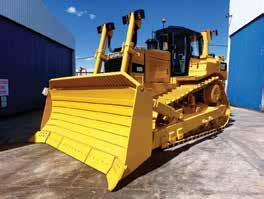
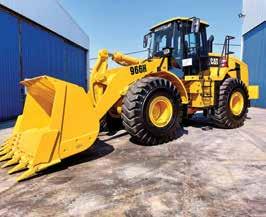




MAHINDRA MAYHEM BRAND NEW MAHINDRA VX90 4X4 TLB’S with AIRCON PARTS RENTAL PLANT AFRICA’S LEADING EARTHMOVING EQUIPMENT & PARTS DEALER www.blcplant.com +27 11 555 2000 info@blcplant.com Service exchange units available. 6 MONTHS WARRANTEE on refurbished components. View all our available stock on our website www.blcplant.com
WHEEL LOADER
EXCAVATOR
CAT 950H; 966H/L; 962H; 980H; 992G/K
CAT 320D; 323D; 329D; 336D; 345D; 349D; 374D/F; 390D/F
MOTOR GRADER
CAT 140H; 140K; 14H
DOZER
OVER 600 MACHINES IN STOCK CAT 740’S
CAT D6R/T; D7R; D8R; D9T; D10T; D11T


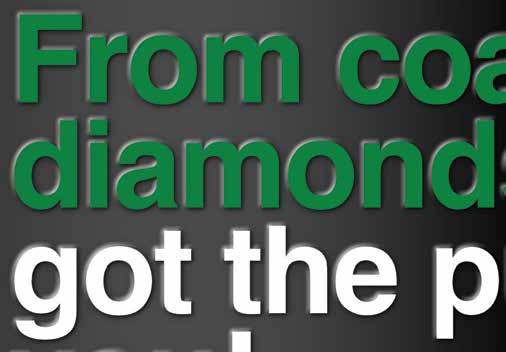











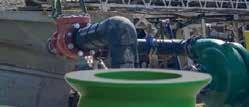





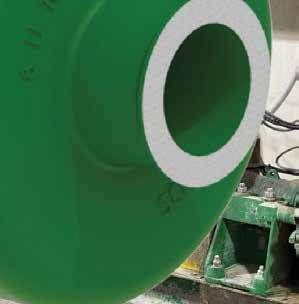
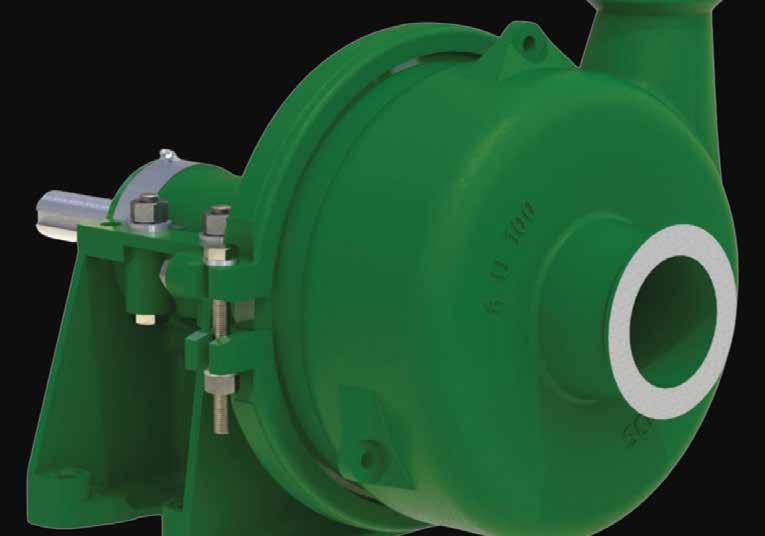


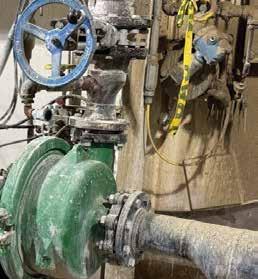



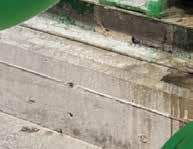



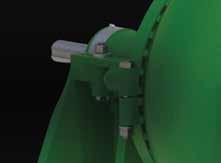



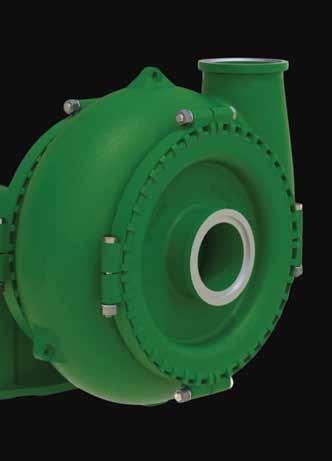
YOUR ONE CALL FOR SLURRY PUMPS. U S e r ies Z seireS Your Partner in Coal Mining Your Partner in Diamond Mining


































































































































































































 By Theuns Ehlers
By Theuns Ehlers























































 By Merle Denson Dispute Resolution Centre Manager at the BCCEI
By Merle Denson Dispute Resolution Centre Manager at the BCCEI























































































































































































































































































